Samsung DU7192 is a very budget-friendly solution that works best as a device for typical Sunday viewing. The television is best suited for daytime watching, as ambient light effectively masks its not-so-great blacks. Thanks to the IPS panel, even at an angle, the colours maintain their hues and saturation. The brightness of the Samsung DU7192 also suggests its intended use, which is television or YouTube, as HDR content on streaming platforms will be too dark. The greatest advantage of the television is the colour reproduction after undergoing a calibration process, as it produces good quality colours that allow for viewing materials in a quality quite close to that which the film director intended. Credit must also be given to the quality of tonal transitions, which are a definite highlight of this television, placing it well above its competition. As for minor features that can be considered good in the Samsung DU7192, there is computer compatibility and the operating system. The former performs remarkably well, and thanks to the properly implemented chroma 4:4:4, the tested television can successfully serve as a monitor, as the readability of fonts will be at a high level. The system, meanwhile, operates very smoothly and efficiently. During testing, there was no situation in which it froze. Additionally, the default media player is excellent and handled virtually every file we prepared for it. So, who is the Samsung DU7192 for? Primarily for less demanding individuals for whom the television serves merely as a small escape in their daily routine. The DU7192 Samsung features a modern and elegant design that will fit into most interiors. The matte frame finish adds style to the device, making it not only a functional but also an aesthetically pleasing element of living room decor. It is worth highlighting that the Samsung DU7192 has an exceptionally slim profile, which makes it easy to mount on the wall, thus saving space in the room. This is an ideal solution for those who wish to enjoy minimalism in their interiors without sacrificing high-quality equipment.
- Matching (Score)
- Our verdict
- TV appearance
- Where to buy
- Contrast and black detail
- HDR effect quality
- Factory color reproduction
- Color reproduction after calibration
- Smoothness of tonal transitions
- Image scaling and smoothness of tonal transitions
- Blur and motion smoothness
- Console compatibility and gaming features
- Input lag
- Compatibility with PC
- Viewing angles
- TV efficiency during daytime
- Details about the matrix
- TV features
- Apps
- Playing files from USB
- Sound
Samsung DU7192 (IPS) vs TCL C7K / QM7K
Direct compare
DU7192 / DU7172
C7K / Q7C / MQLED85K / C79K / C71K / QM7K
Available screen sizes: 50”

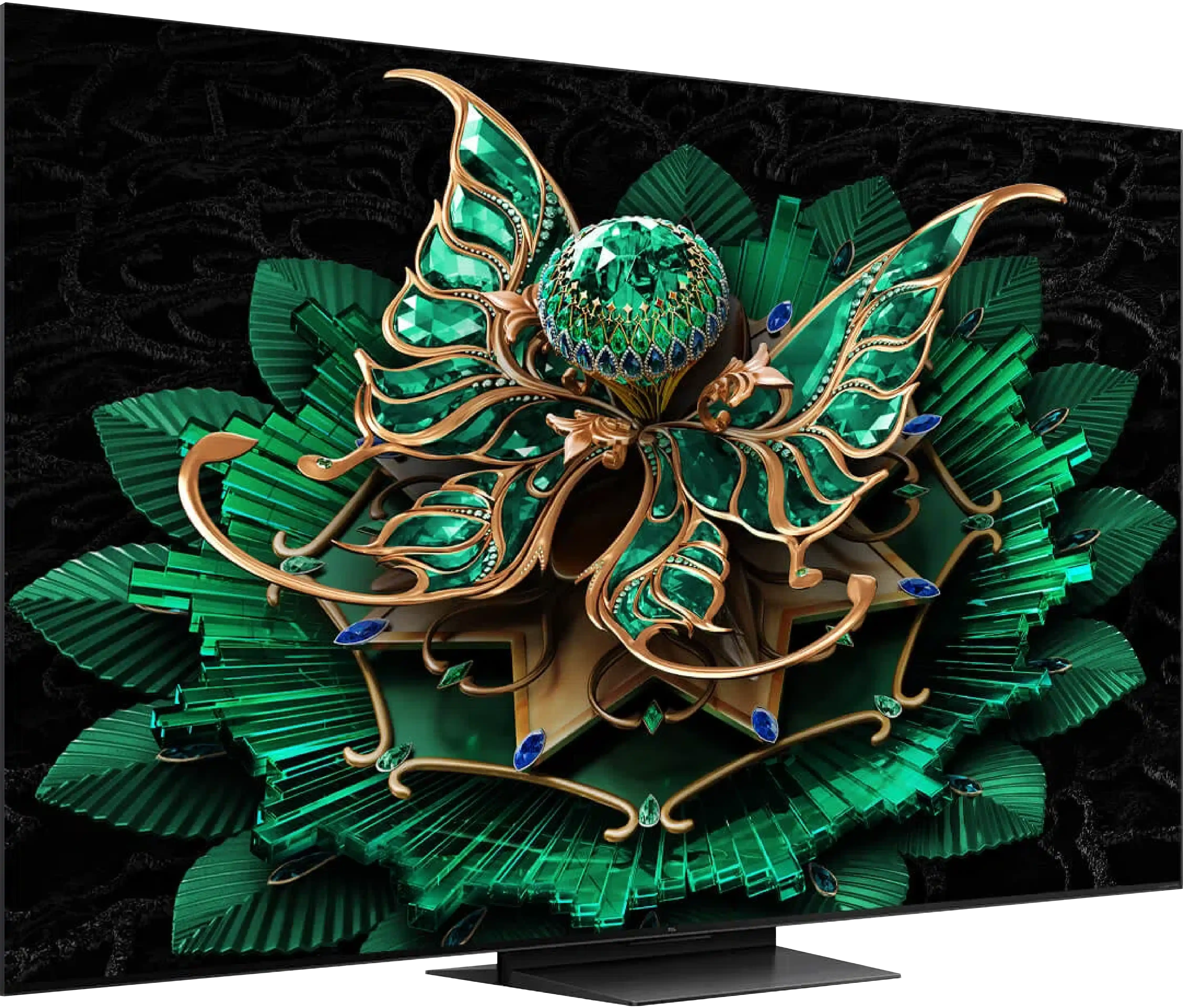
Panel type: LCD IPS
Resolution: 3840x2160
System: Tizen
Model year: 2024
Complete the survey to find out the result

Panel type: LCD VA
Resolution: 3840x2160
System: Google TV
Model year: 2025
Complete the survey to find out the result

Overall rating
5.0
7.2
Movies and series in UHD quality
4.6
6.7
Classic TV, YouTube
4.2
6.5
Sports broadcasts (TV and apps)
4.8
6.6
Gaming on console
6.4
8.5
TV as a computer monitor
6.0
8.4
Watching in bright light
2.8
6.1
Utility functions
5.5
7.3
Apps
8.7
9.6
Sound quality
5.4
7.0
Complete the survey to find out what fits your preferences
Advantages
Excellent cooperation with the computer - low input lag, chroma 4:4:4
Faithful colour reproduction after calibration
Minimal colour degradation at an angle
Smooth operation of the Tizen system
Very good black - VA panel with a large number of Mini-LED zones
High brightness in HDR - over 1000 nits
Excellent for gamers - HDMI 2.1, low input lag, VRR, ALLM, etc.
Good motion smoothness - 144Hz panel
Supports multiple HDR formats: HDR10, HDR10+, Dolby Vision
Google TV operating system with access to a vast array of applications
Pleasant sound from built-in speakers
Disadvantages
Low HDR material brightness
Lack of tone transition smoothing features
Average image scaling
Google TV can operate with minor stutters
No USB recording and PiP functionality
Our verdict
There are televisions that come for testing, and you immediately think: “oh, just another average one, probably like many others.” And basically… that’s true. The TCL C7K doesn’t try to dethrone OLEDs, nor does it shout from the box “revolution!” Yet, after a few days of testing, it’s hard not to think: “wow, this is really good equipment.” And that’s exactly what the C7K is. The biggest asset of the C7K is its decent picture at a reasonable price – MiniLED and quantum dots do their job here. The colours are vibrant, the brightness satisfactory, the contrast impressive, and with the right settings, you can truly enjoy viewing in the best quality. The second strong point is the smoothness of motion – both in sports and games. Support for HDMI 2.1, variable refresh rates, 144 Hz, and a whole host of other features make gaming on this TV a pure joy. Then there’s Google TV, which – despite some minor shortcomings – provides access to nearly an endless library of applications. Voice control, quick access to YouTube, Netflix, AirPlay support – it has everything you need for everyday use. Are there downsides? Of course. The Google TV system can have moments of “hesitation,” and MiniLED – being MiniLED – can stumble on very complex film scenes. But these are details. After all, the C7K is a mid-range model – and in this class, it performs simply excellently. So if you are looking for a reasonably priced, modern television with Google TV that looks good, works well, and plays quite decently without ruining your budget – the TCL C7K definitely deserves your attention.
TV appearance





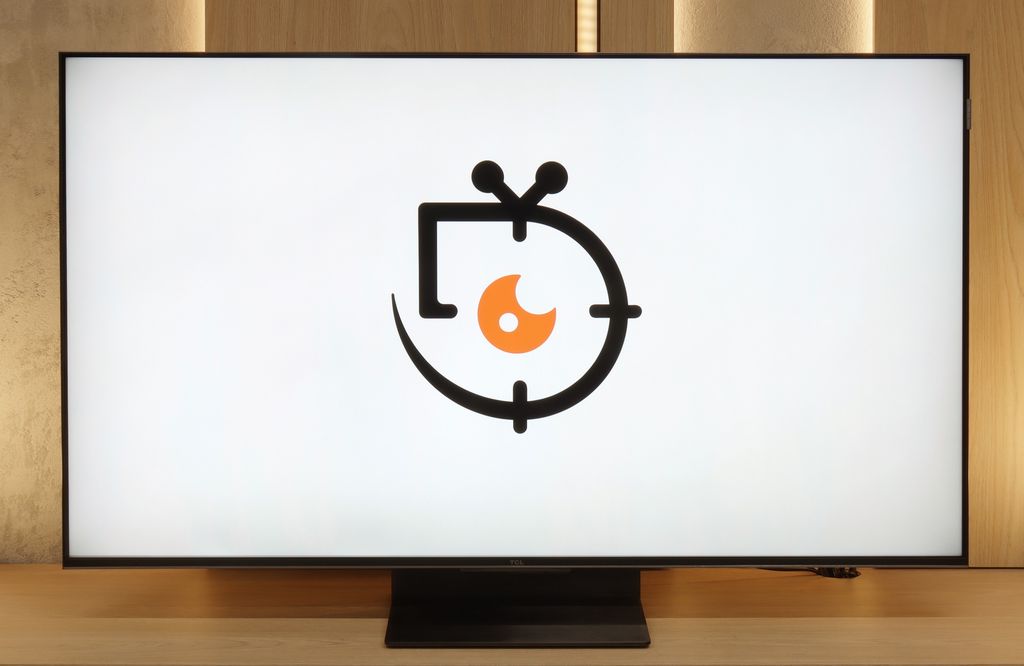
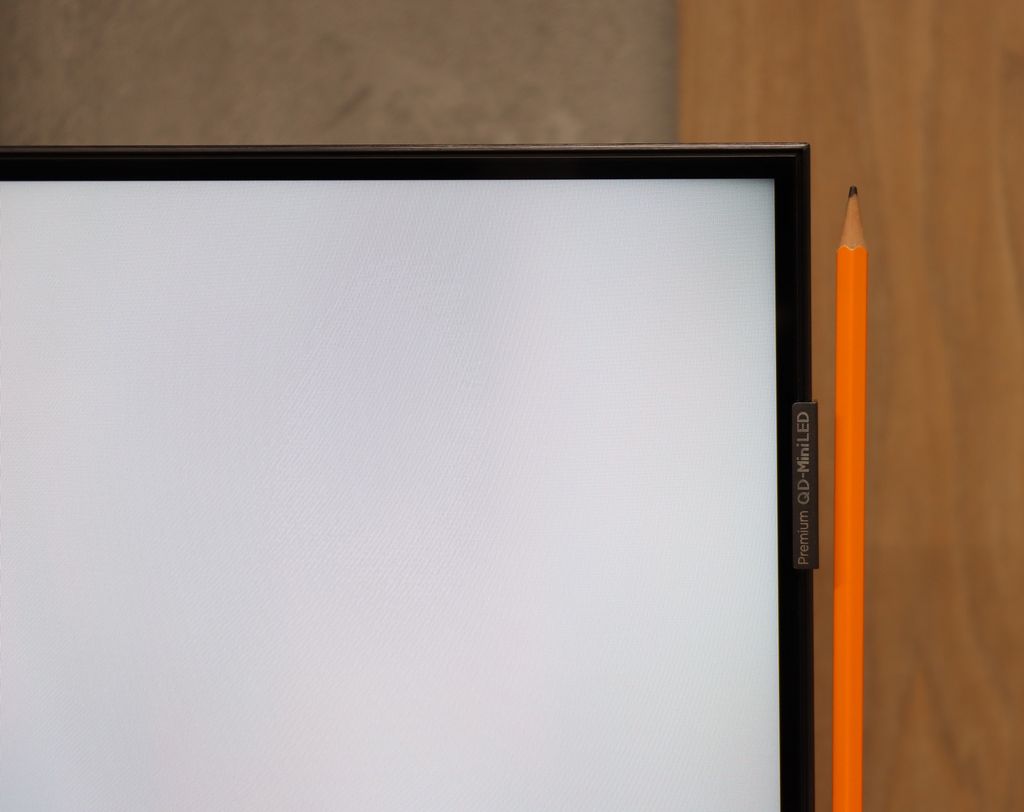
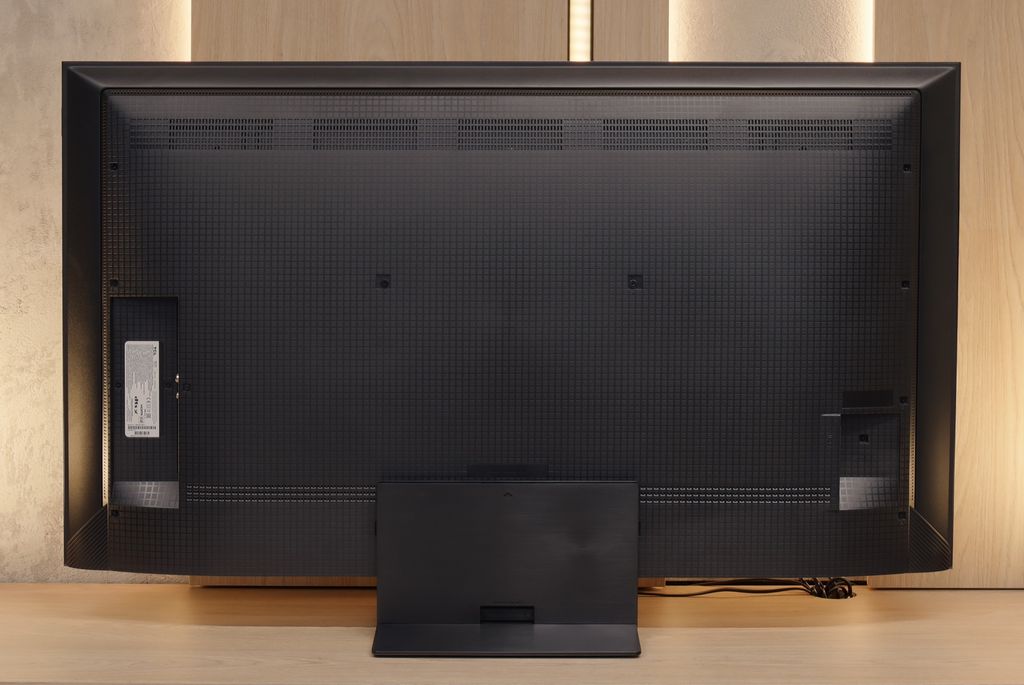
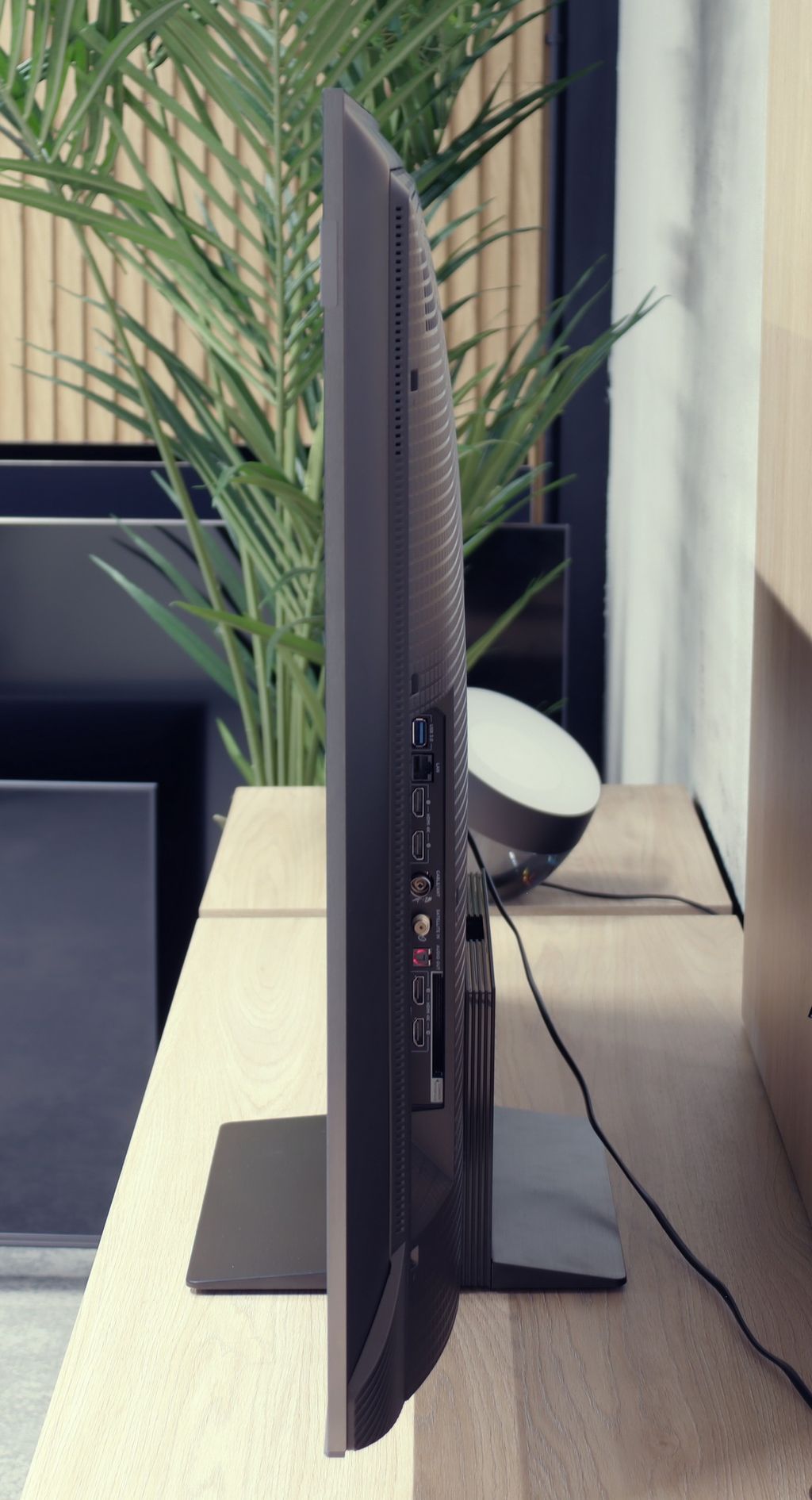
Contrast and black detail
1.6/10
7.1/10
Local dimming function: No
Local dimming function: Yes, number of zones: 336 (14 x 24)
Contrast:

Result
800:1

Result
950:1

Result
900:1

Result
900:1

Result
800:1

Result
161,000:1

Result
18,750:1

Result
13,150:1

Result
6,300:1

Result
4,200:1
Halo effect and black detail visibility:

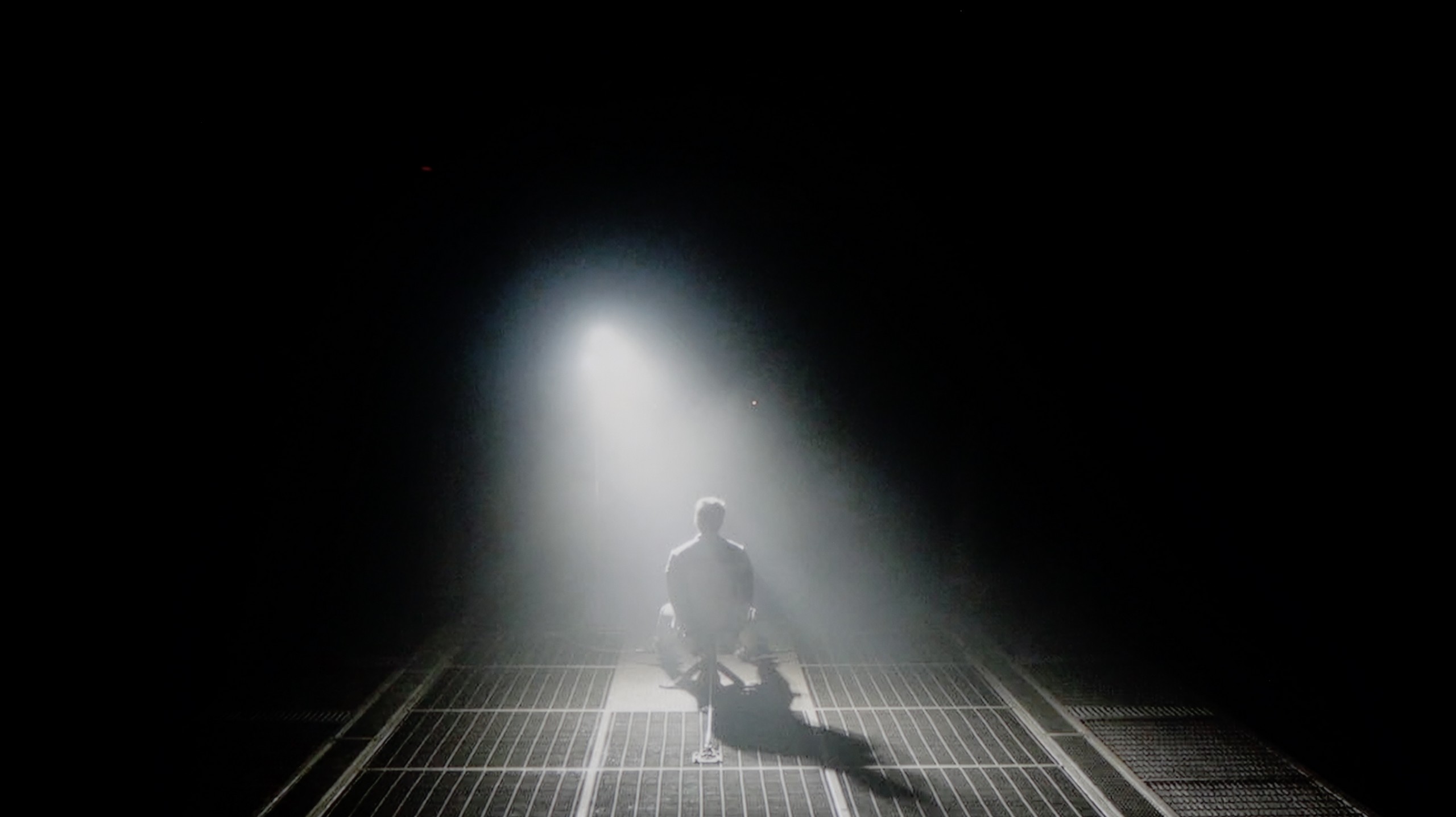
Samsung DU7192 utilises an IPS panel, which, as can be seen, cannot boast the highest contrast and black levels. Measurements indicated that the tested television can only provide maximum values of around 950:1, which is a very low result and rather does not bode well for high performance in the context of home cinema. It is worth noting, however, that we are testing the 43" version, so in a different size, a different type of panel may be "in play". As for the panel used in the Samsung DU7192, it belongs to the lower categorised classes of IPS screens, as these can deliver significantly higher results. However, it should also be remembered that we are dealing with a very budget-friendly unit, which will find its application primarily in an additional room or serve as a cheap receiver for a senior, for whom the quality of the displayed image is often indifferent. In the first image from the film "Oblivion", we primarily see a deep navy black, but also very good separation of lights coming from the spotlight. For better visibility, we recommend examining the image in an enlarged view. Just as there was no significant reason to deny the performance of the television in the first scene, in the second from "Sicario 2", it can be said that it does not require further commentary. Due to practically zero contrast, the scene lacks any depth. There are also noticeable very strong overexposures at the corners of the panel, which are common in budget units. Notable positives include quite good detail specificity, however, this is looking for any positive amidst disappointing results.
The 50-inch TCL C7K that we tested surprised us right from the start – it’s the smallest model in the series, yet it comes equipped with a VA panel with MiniLED backlighting and – attention – as many as 336 dimming zones. For comparison: many significantly larger televisions from higher tiers would be eager to boast such a number. Here we have it in the 50-inch version. Sounds promising, doesn’t it? So how does this translate into real movie-watching experiences? In the vast majority of tested scenes – very well. The contrast was high enough that it reached even six-digit values in measurements, which practically means very deep blacks and well-separated highlights. In scenes from films like The Revenant or Oblivion, the effect was impressive, matching the best LCD screens in this class.
However, not everything went perfectly. Despite the impressive number of zones, managing them was not always exemplary. In more complex scenes, where small light sources or a high level of detail appeared, the television had issues with the so-called halo effect (a glowing halo around bright objects) or overly aggressive dimming of the image. In such situations, contrast could either collapse due to overexposure of certain zones or, conversely – details in bright areas disappeared because the zones suppressed the light too much. Nonetheless, it is worth noting that in the vast majority of scenes, the contrast was more than satisfactory. And taking into account the size of the television and the price, the final effect will satisfy not just average users.
HDR effect quality
3.4/10
5.4/10
Luminance measurements in HDR:

Result
200 nit

Result
228 nit

Result
246 nit

Result
233 nit

Result
245 nit

Result
1051 nit

Result
185 nit

Result
454 nit

Result
200 nit

Result
836 nit
Scene from the movie “Pan” (about 2800 nits)


Scene from the movie “Billy Lynn” (about 1100 nits)


Static HDR10


Dynamic: HDR10+
Dynamic: Dolby Vision


HDR luminance chart:
TCL C7K / QM7K
HDR luminance
Samsung DU7192 (IPS)
HDR luminance
The maximum luminance in HDR materials is 245 nits, which is often surpassed by even lower results. Such values will definitely not be sufficient for comfortable viewing of HDR materials due to the lack of appropriate image dynamics and colour inaccuracies caused by the low brightness of the unit. Although the manufacturer has equipped its device with HDR format offering dynamic metadata, HDR10+, which is what we are referring to, is very rarely used compared to Dolby Vision, which Samsung has not yet introduced in its televisions. It is also worth mentioning that Samsung DU7192 offers only 82% coverage of the wide DCI-P3 colour gamut, which is another reason we should not supply a signal in wide dynamic range, as colour losses will be very noticeable. Samsung DU7192 provides high-quality images that will satisfy most users.
TCL C7K is one of the brightest MiniLED televisions in its price range. Under the best testing conditions, the screen managed to achieve over 1200 nits, resulting in impressive, at times almost blindingly bright scenes. And most importantly – this is not just a theory based on measurements. In practice, the brightest parts of films can shine with true cinematic grandeur. Fans of home HDR cinema should be truly satisfied.
The impression is excellent, especially in scenes with large areas of brightness – a white sky, explosions, sun reflections, or magical sunsets can surprise with an intensity of light that is rarely seen in this price range.
However, it gets a bit worse when more challenging scenarios appear on the screen, as described when discussing contrast – that is, images full of details, with small, bright elements on a dark background. In such cases, the C7K often decides to preserve black levels at the expense of brightness. An example? Scenes from the films Sicario 2 or Life of Pi, where small light sources (like a distant lantern) can become less visible, and details in the lights are simply dimmed or blend into the background.
For many viewers, this may be an acceptable compromise – as we achieve deep black levels and a pleasing plasticity of the image. Nevertheless, it is worth being aware that the visibility of small details in bright areas is not this model's strongest suit. It is simply a technological limitation that still exists – even with over 300 zones.
Factory color reproduction
4/10
6/10


Factory Mode
After calibration
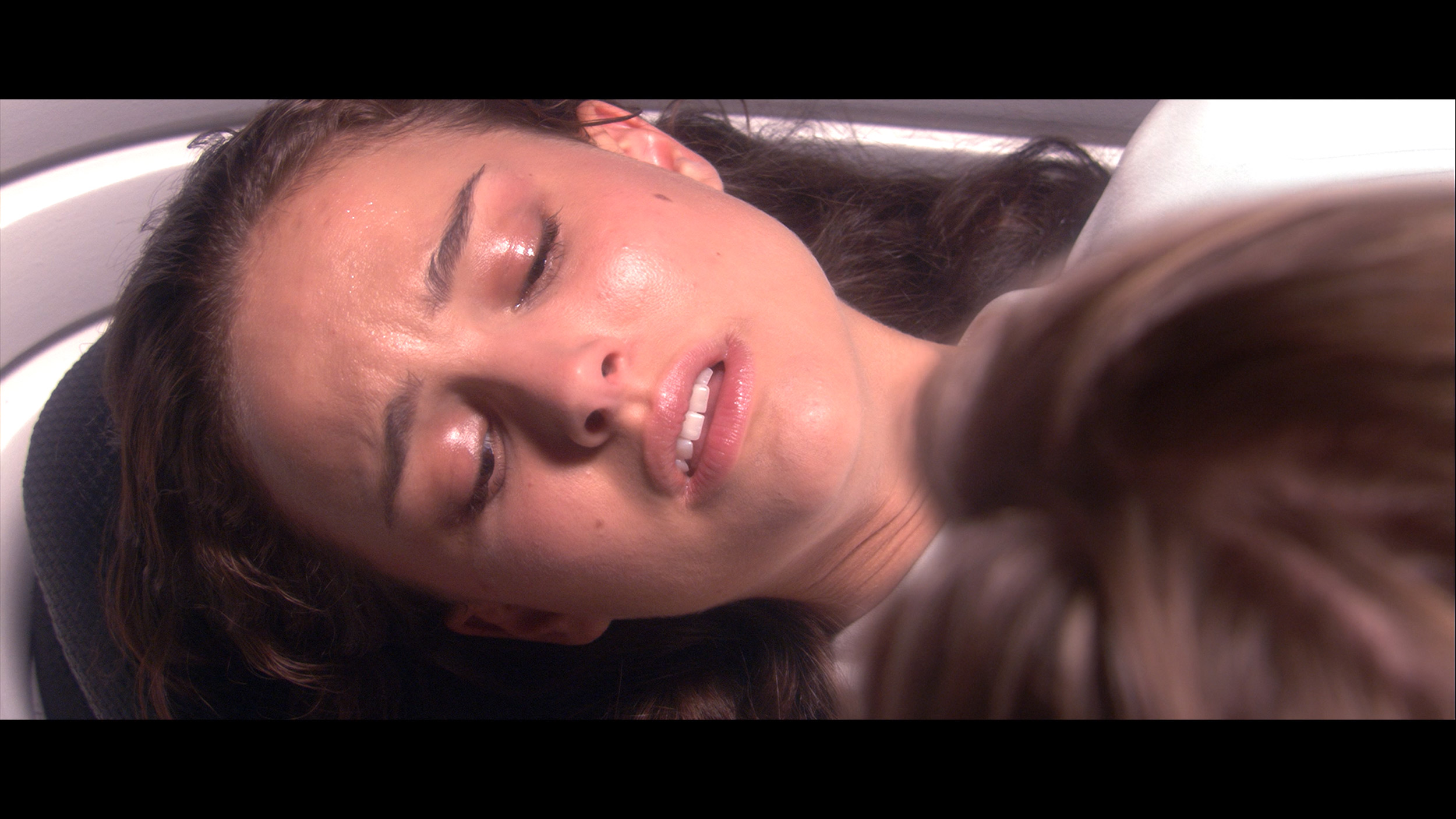
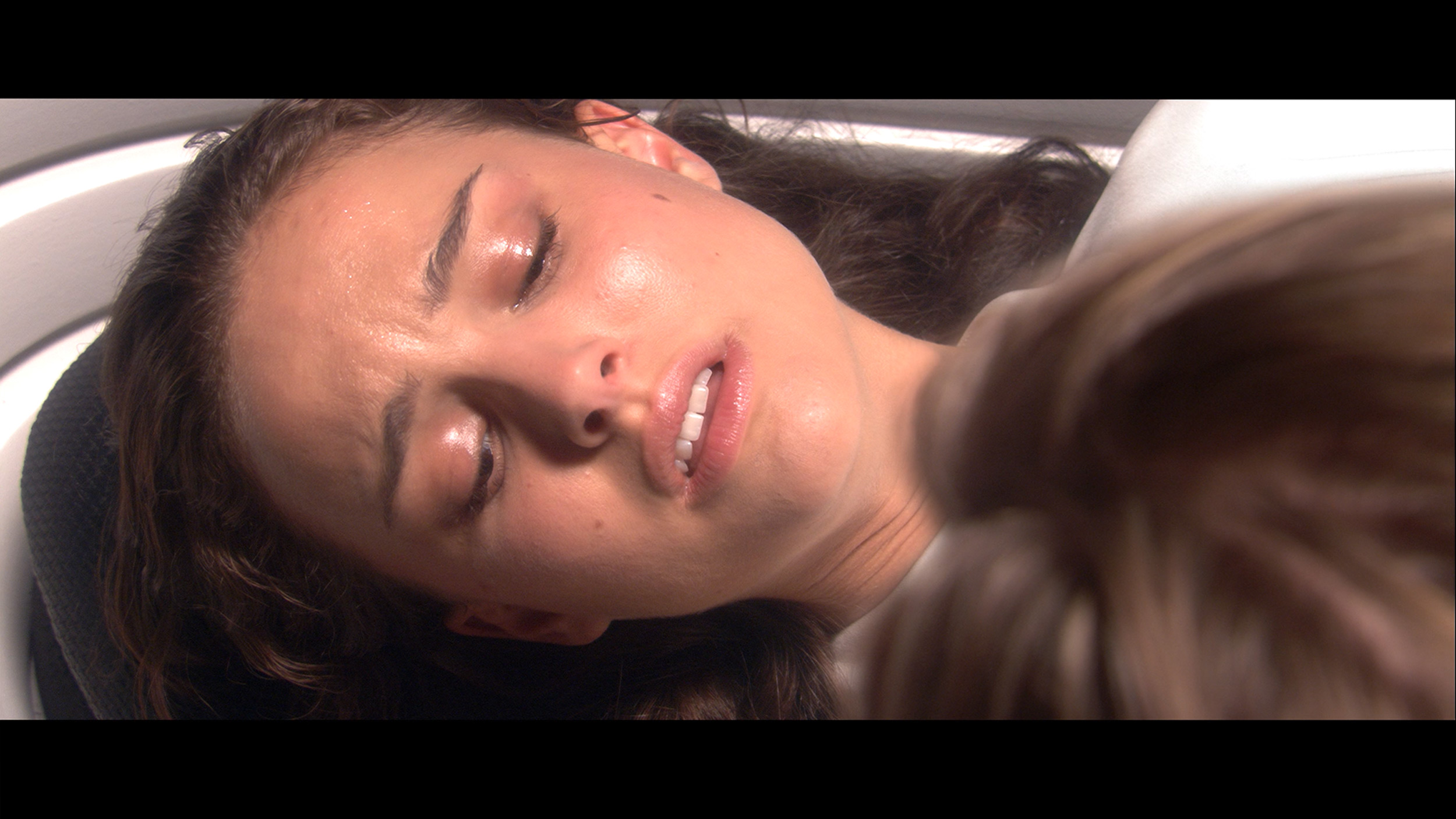
Factory Mode
After calibration
The best factory mode we used throughout the testing process was "Filmmaker". This, like the vast majority of modes, had its drawbacks. Starting with the most basic chart, which is the white balance, we can notice a pronounced dominance of red, both in SDR and HDR modes. Although there was also some green in the latter, it did not significantly affect the overall impression. A chart with such results, in both cases, gives us an image characterised by strong yellowing, clearly visible on whites and on the faces of the actors. Another important chart, if not more important, is gamma. This, which is meant to control contrast in materials with a standard colour palette, was quite good in factory mode with one caveat regarding the low end. In the darkest scenes, it was significantly lowered, which led to strong brightening, resulting in the film lacking contrast and all suspense. As we mentioned, HDR materials in terms of white balance remained at a similar level. The main change is the EOTF curve chart. At the very beginning, we can observe a bulge, which, just like in the case of gamma, significantly brightened the darkest scenes. However, the chart then changed its characteristics significantly and the measured result dipped below the reference line, causing the film to lose even more dynamics.
A new feature in TCL televisions for 2025 is the long-awaited Filmmaker mode, which until now has been found in most competing brands. This is great news, as this mode is considered to be the truest to the original vision of the creators and is often recommended by enthusiasts of good picture quality. Unfortunately, as is often the case, the mere presence of this mode does not guarantee perfection. The Filmmaker mode in the TCL C7K is not without its flaws. There can be criticism of the incorrect white balance, particularly a slight dominance of blue, which resulted in cool, somewhat greyish skin tones. But that was not the biggest issue. The main complaint was the excessive brightness exposure, which is clearly visible on the gamma and EOTF graphs. The image was simply too bright, at times even blown out, which affected not only the texture of scenes but also the overall viewing experience. Some details were simply lost, and the entire image looked as if someone had slightly overcooked the brightness slider. As always, we decided to check what could be extracted from this after calibration. And that’s where it started to get really interesting…
Color reproduction after calibration
5.9/10
7.5/10

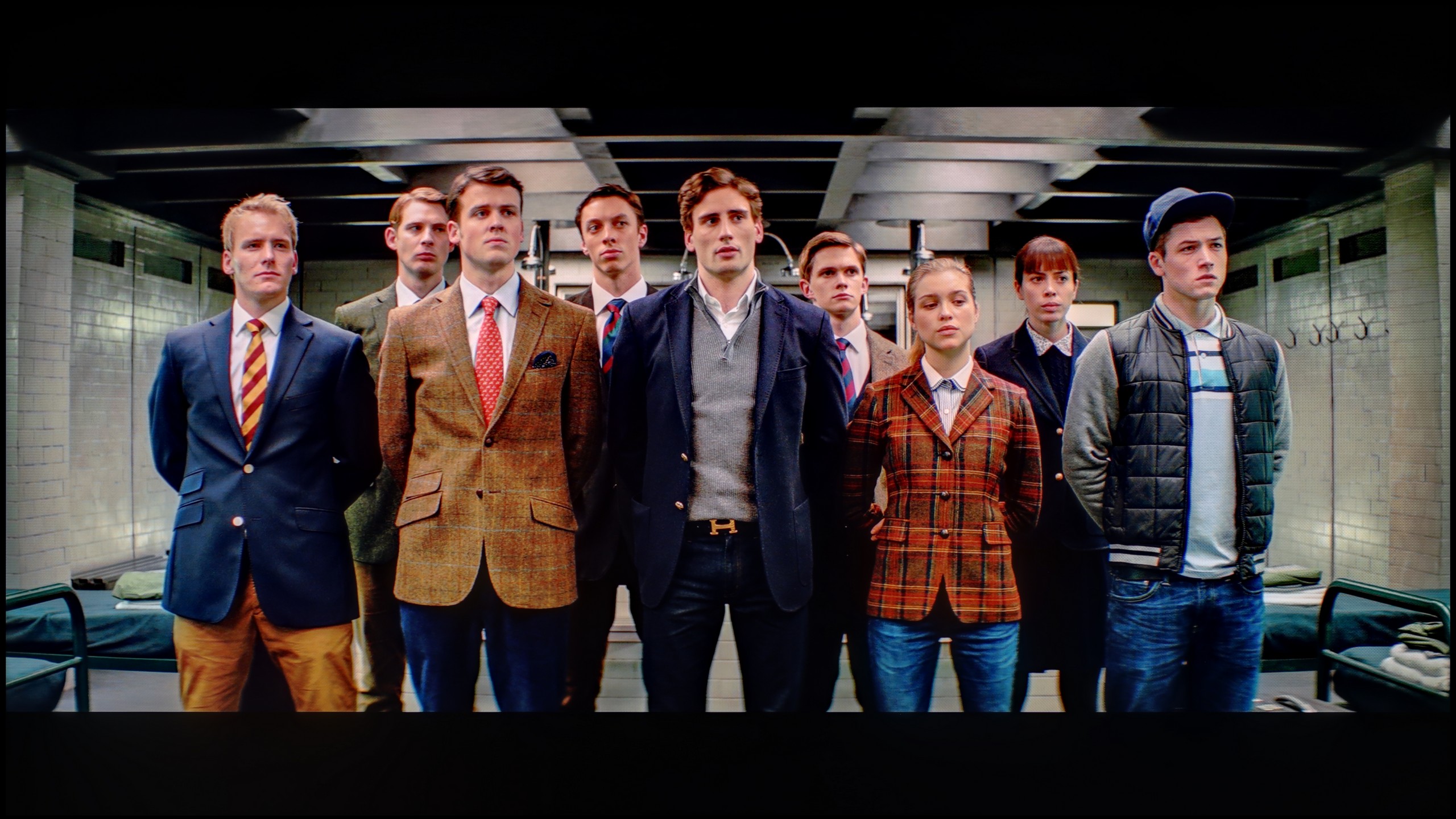

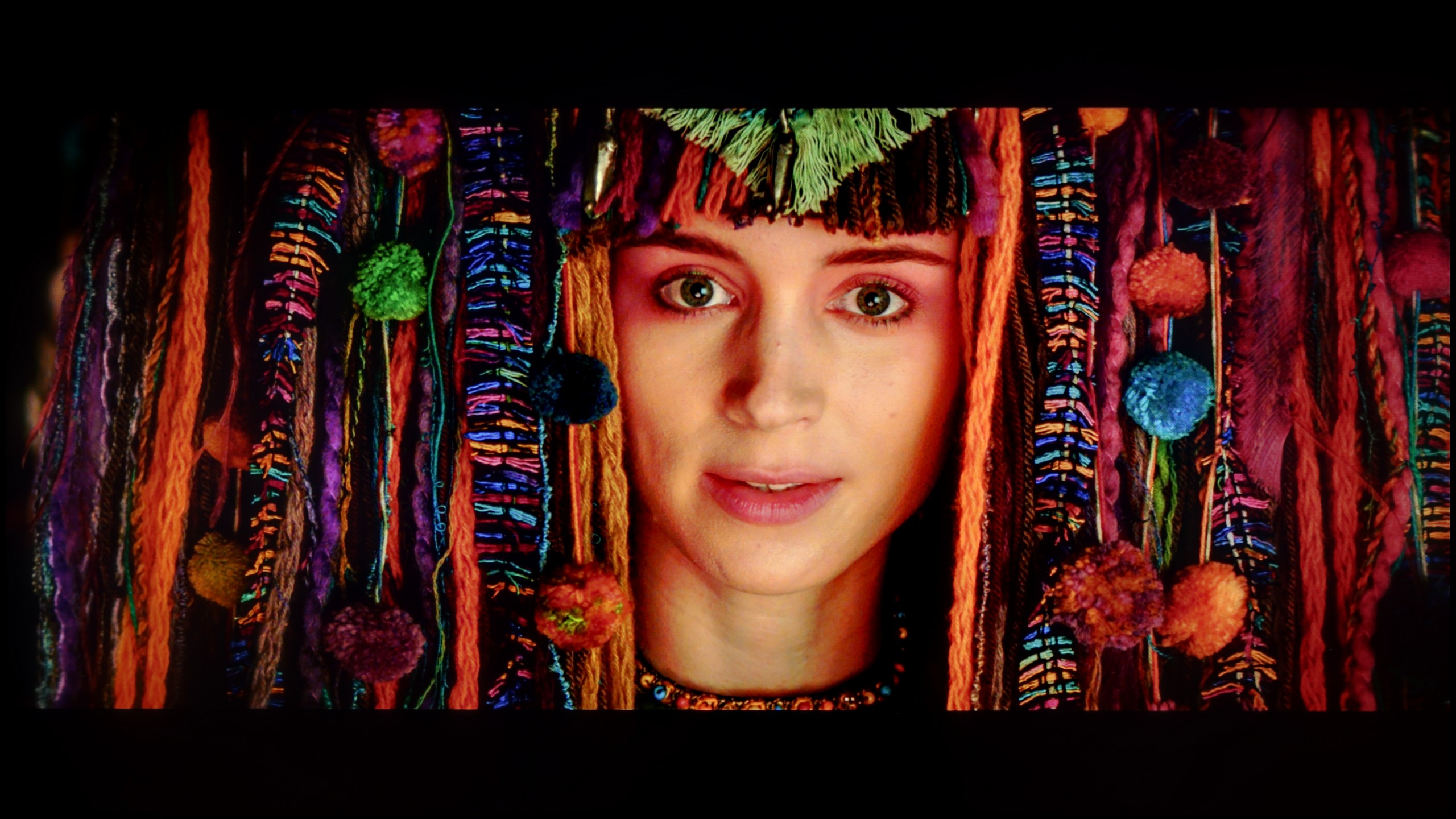
Samsung has equipped even its lowest-end televisions with advanced tools for the calibration process. So we got to work, and the results of our efforts are more than satisfactory. The white balance, which previously had a strong yellow tint in both scenarios, now looks much, much better, even if there are slight deviations from the norm. The image will still look significantly cleaner than it did before the calibration process. We managed to model the gamma in SDR materials very well, ensuring that the image will be as contrasty as the television allows. The EOTF curve has also changed its face and no longer brightens or darkens the image in such a drastic way. However, it's worth mentioning that in the case of HDR materials, deltaE errors are still very high, but this is due to the insufficient brightness of the unit.
After calibration, the TCL C7K showcased itself in a really good light, especially when it comes to SDR content. We managed to precisely tune the white balance, colour gamut, and brightness characteristics to the point that colour errors on the ColorChecker palette dropped below a value of 2. For the uninitiated – this is nearly a perfect result, which means that the image is very close to what the creators intended. Unfortunately, the situation was worse with 4K HDR content. Although we managed to gently stabilize the white balance and correct its previous errors, it was still evident that the television has certain "MiniLED traits," especially in brightness management. When we checked how the C7K handled the EOTF curve on actual film scenes, rather than just on synthetic test patterns, it turned out that the screen still tends to slightly brighten the entire image. This impacts the overall experience – blacks lose some depth, and the image becomes less contrasty than it should be. Despite these minor shortcomings in HDR content, the overall reception of materials – especially in SDR – is truly very good. After calibration, the C7K can display an image that can compete successfully with much more expensive models. Good colour tuning, natural skin tones, and pleasant brightness make movie sessions and everyday viewing of content more than satisfactory.
Smoothness of tonal transitions
7.7/10
8.6/10





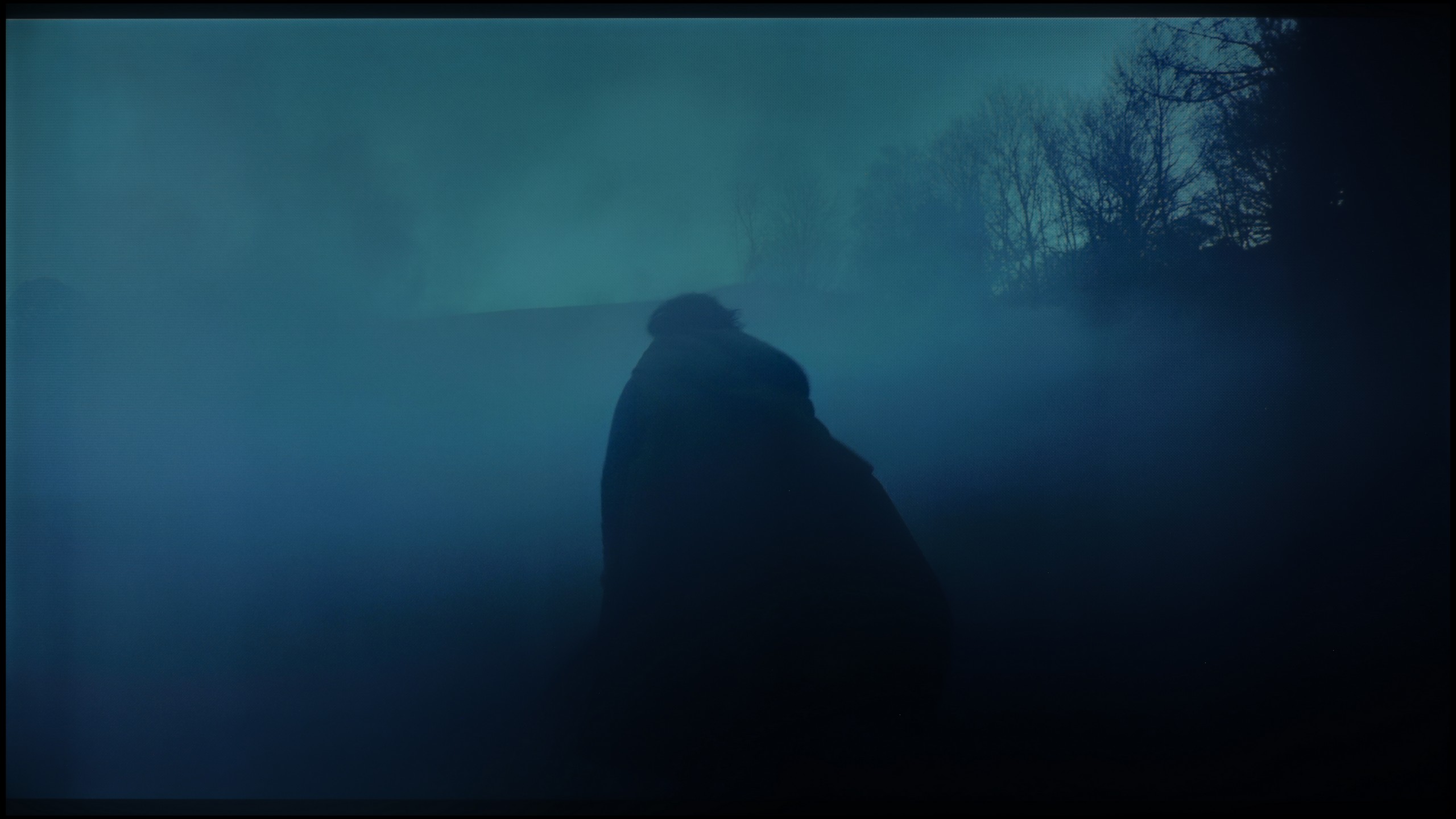






The place where we must commend the television Samsung DU7192 is our procedure for checking the fluidity of tonal transitions. The tested television managed these very well, and in practice, there is nothing that could subject us to any inconveniences. The only place where something can be noticed is in the last scene and the slight posterisation in the reds on the left side. At this point, we must also highlight one more issue, which is no longer related to this testing procedure. Namely, in the vast majority of scenes, there are strong inconsistencies in the backlighting, which will be much more bothersome in the context of evening watching.
The TCL C7K handles colour gradation very well – in most of the tested scenes, tonal transitions were smooth, and colours blended together without visible outlines or the artificial "blot" effect. In everyday use, it's hard to find anything to criticise – the picture looks natural, without annoying transitions or digital artifacts. Certain limitations only arise in very dark tones – particularly in a heavily muted grey palette, where the television may struggle to reproduce the ideal gradation. But this is absolutely understandable, as even many significantly more expensive models in this regard simply falter. Fortunately, these situations are rare and do not significantly impact the overall impression.
Image scaling and smoothness of tonal transitions
3.2/10
5.5/10
Smooth transition function

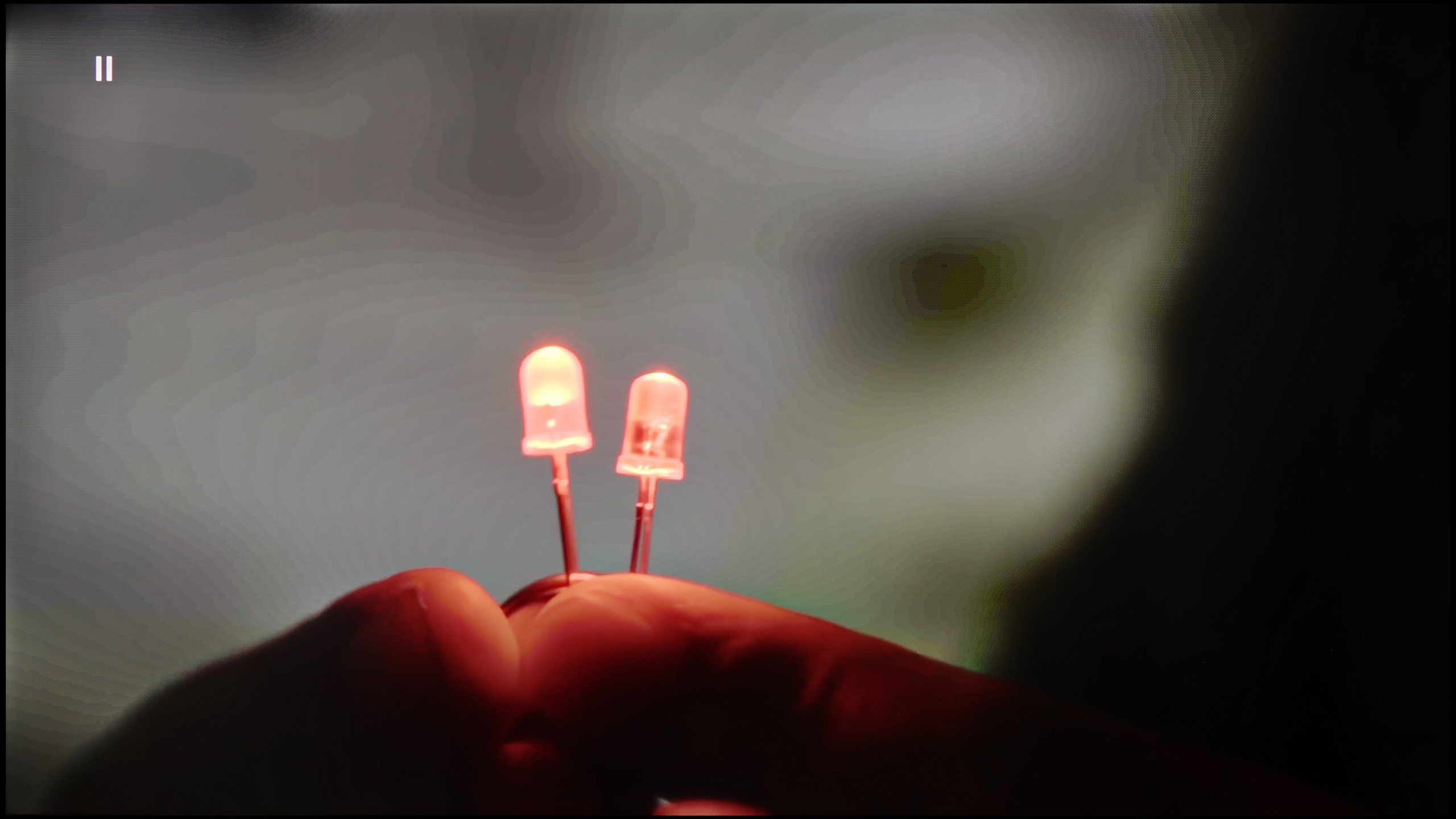
Image without overscan on the SD signal


Let's return for a moment to the feature of smoothing tonal transitions. We can set it in only two ways - off and auto. As one can easily guess, the former causes significant problems with gradation. However, if we set the latter, both films and series will offer us smooth transitions of colours. It is worth mentioning, though, that this feature has its drawbacks. It greatly interferes with the director's intent, softens the film grain effect, and, what’s worse, often misinterprets small details, also blurring them. In light of this, we conclude that the feature does not exist and do not recommend using it, as this is exactly how the tests of smoothness of tonal transitions were conducted on the tested display.
The next thing we will check in this paragraph is the image scaling process, which is extremely important when watching materials in a lower resolution. Unfortunately, as this is the manufacturer's lowest model, this function does not work very well. All details are heavily blurred, and a characteristic white halo surrounds the characters.
TCL C7K is equipped with a feature that, according to the manufacturer, is meant to smooth out unwanted colour transitions – a sort of rescue for less successful tonal shifts. It is called "Gradual Smoothing" and… well, it sounds ambitious, but in practice it works very poorly. Regardless of whether we set it to a low or high level, the difference is minimal. Worst of all, the feature can cut out elements from the picture that should be there. Fortunately, film grain remains untouched, so at least it doesn’t smooth everything indiscriminately, but still – it’s better to simply turn this option off.
When it comes to scaling lower resolution content, it is somewhat better. SD and HD materials look quite decent, although at times we had the impression that the image loses sharpness and becomes too soft – as if something took away its definition. Fortunately, with very low sources (e.g. 576p), there was no overscan effect, meaning the picture was not artificially cropped – everything fit on the screen as it should.
Blur and motion smoothness
4.9/10
8.1/10

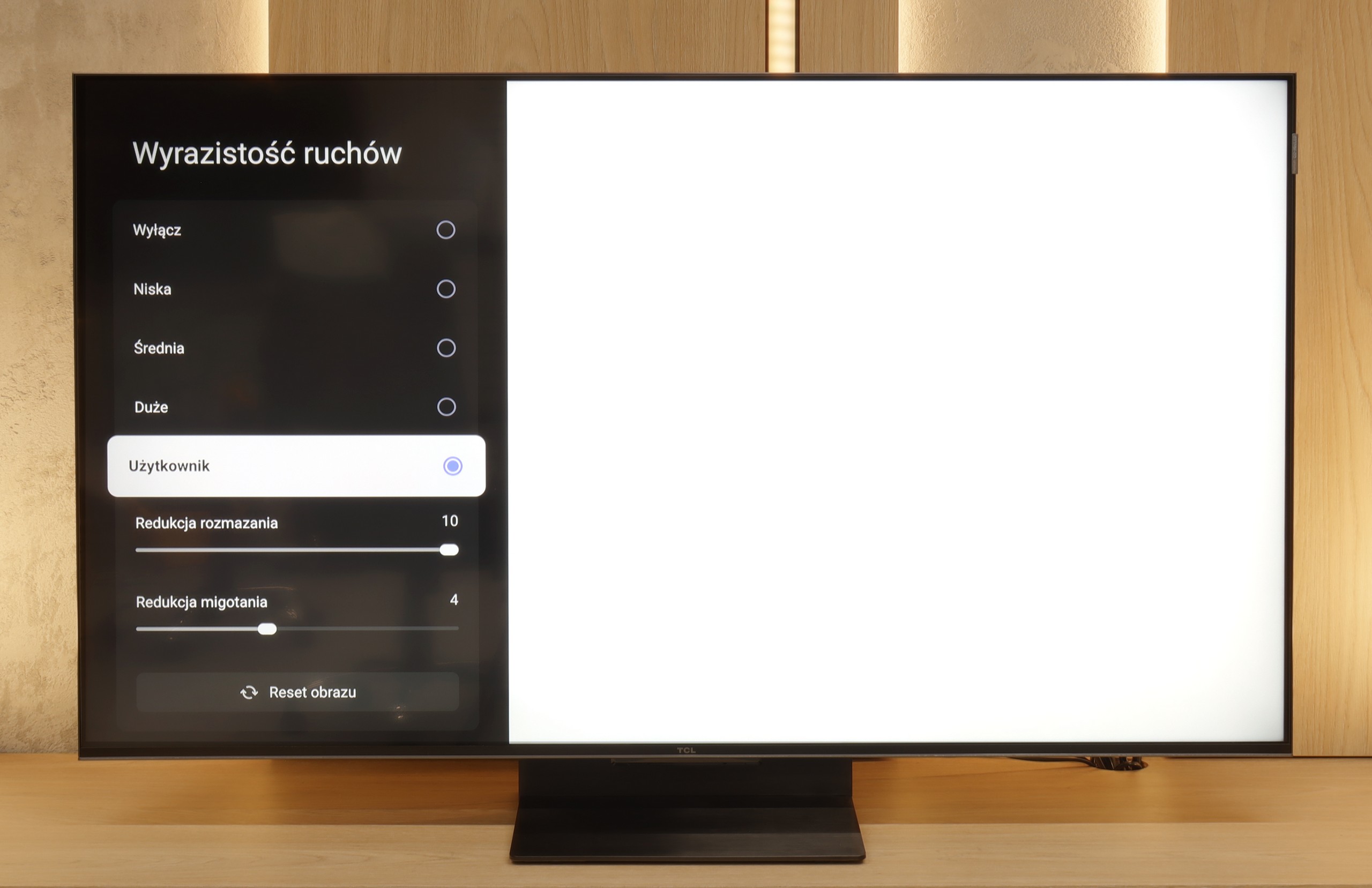
Blur (native resolution, maximum refresh rate):





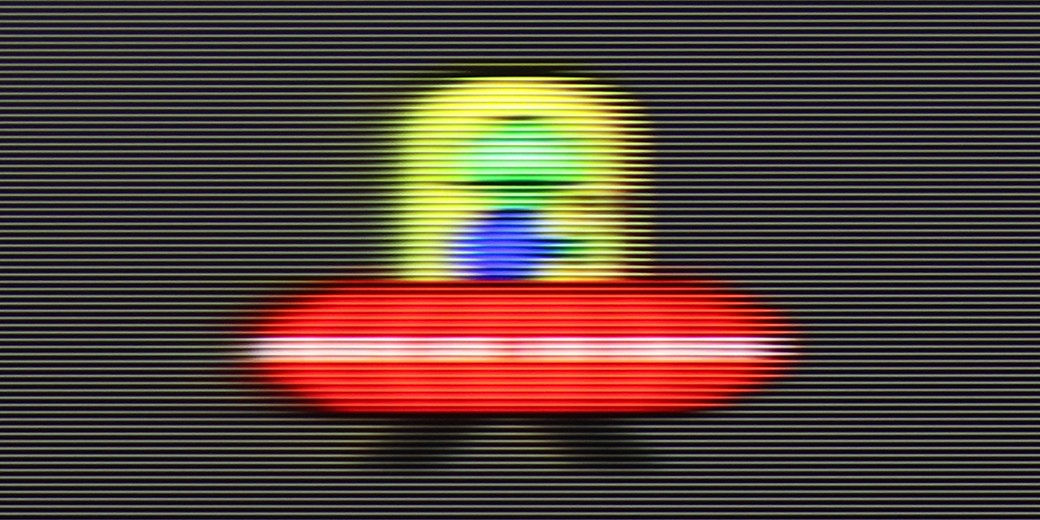
Blur (BFI function enabled):



Smużenie ():
Smużenie (4K 144Hz):



Despite the fact that Samsung DU7192 is the lowest model in the manufacturer's portfolio, it has been implemented with a motion smoothing system. Although it is quite limited in features compared to higher models, its existence is a considerable advantage in the context of competition from similar price ranges. The maximum refresh rate we will provide to the tested television is 60 Hz, which is entirely sufficient for movies and series, although not for sports. In the motion smoothing menu, we find two functions responsible for improving fluidity. These are "Motion Blur Reduction" and "Clear Motion (LED)". We will discuss the latter a bit later. Let us focus on the former, as it is quite puzzling. Unfortunately, despite its presence, we did not find any usefulness. On each of the settings, the image looked the same, with the characteristic judder known from materials recorded at 24 fps.
The matrix of Samsung DU7192 features an average response time. It is worth mentioning that due to this particular type of matrix, it is better than VA matrices in a similar price range. Therefore, it can be exceptionally said that it will not be the worst in the context of watching sports.
The TCL C7K handles motion fluidity really very well. The matrix used in it offers a refresh rate of 144 Hz, which in itself suggests that this television is more than just a regular "60 Hz" panel. Furthermore – if we connect the C7K to a computer and set the resolution to Full HD. But we'll write more about this in the paragraph about gamers and PC collaboration. Returning to everyday use – both sports and films look very good here. Thanks to the fast panel and well-functioning motion smoothing, the C7K is great for watching matches, but also for movie screenings. In the menu, we find two sliders – motion blur reduction and flicker reduction – which allow us to adjust the fluidity effect to our own preferences. At lower settings, we get a more cinematic effect, with slight stuttering motion. At higher settings – the picture becomes more theatrical, fluid to the point of excess. Everyone has their own preferences – anyone can set it to their liking.
Console compatibility and gaming features
4.2/10
9.8/10
- ALLM
- VRR
- VRR range48 - 144Hz
- Dolby Vision Game Mode
- Correct implementation of HGIG
- 1080p@120Hz
- 1440p@120Hz
- 4K@120Hz
- Game bar

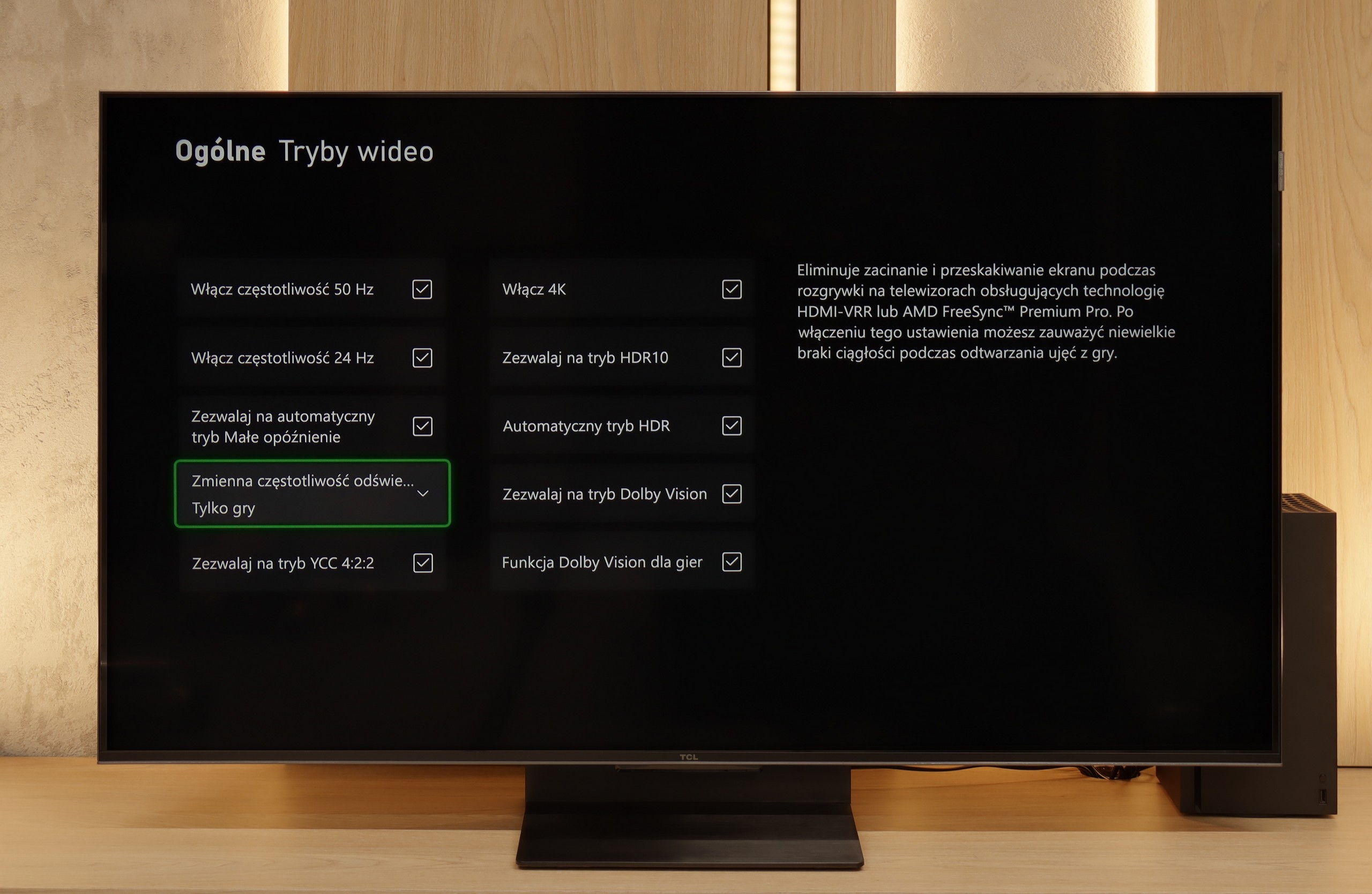

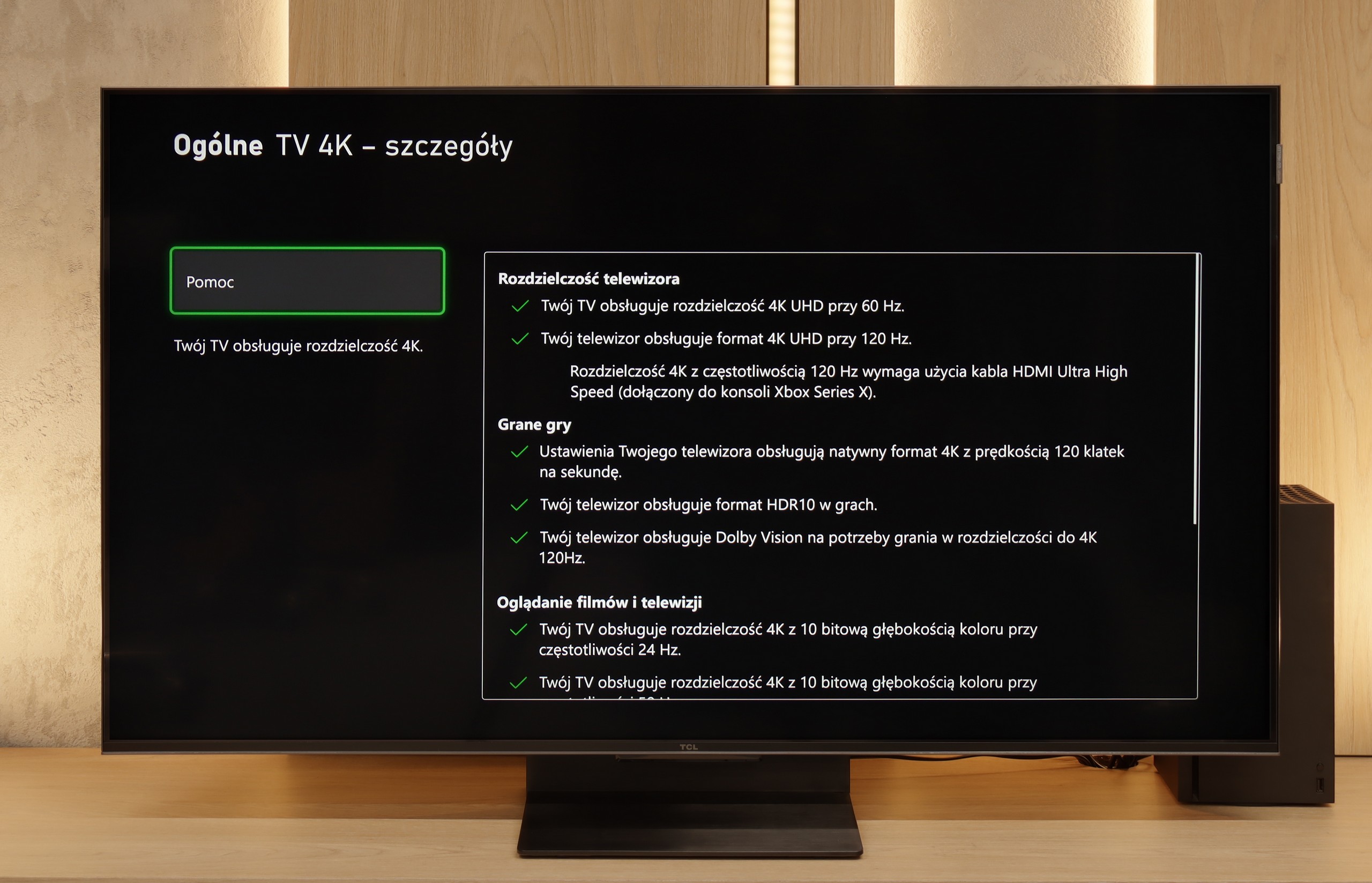

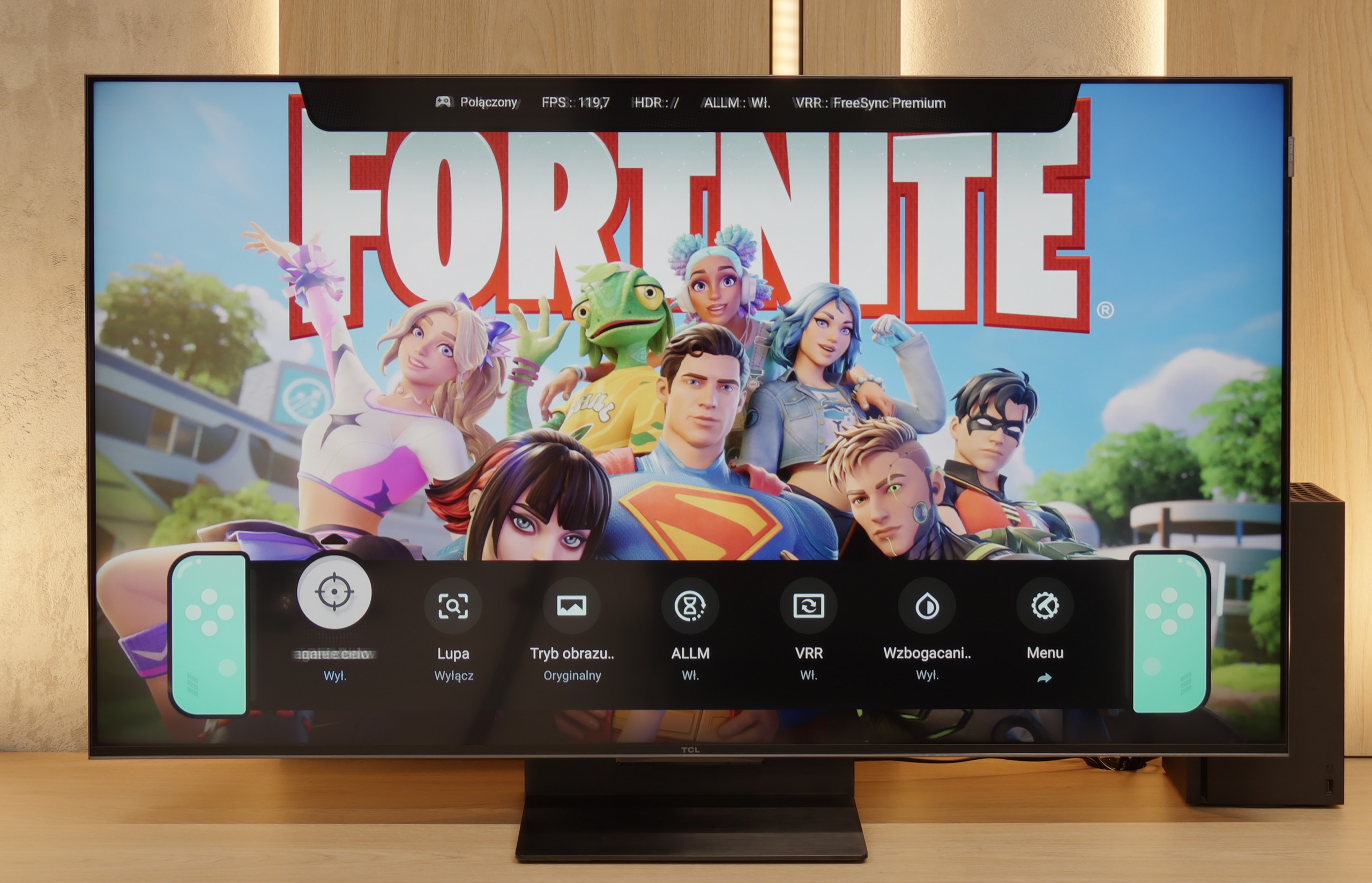

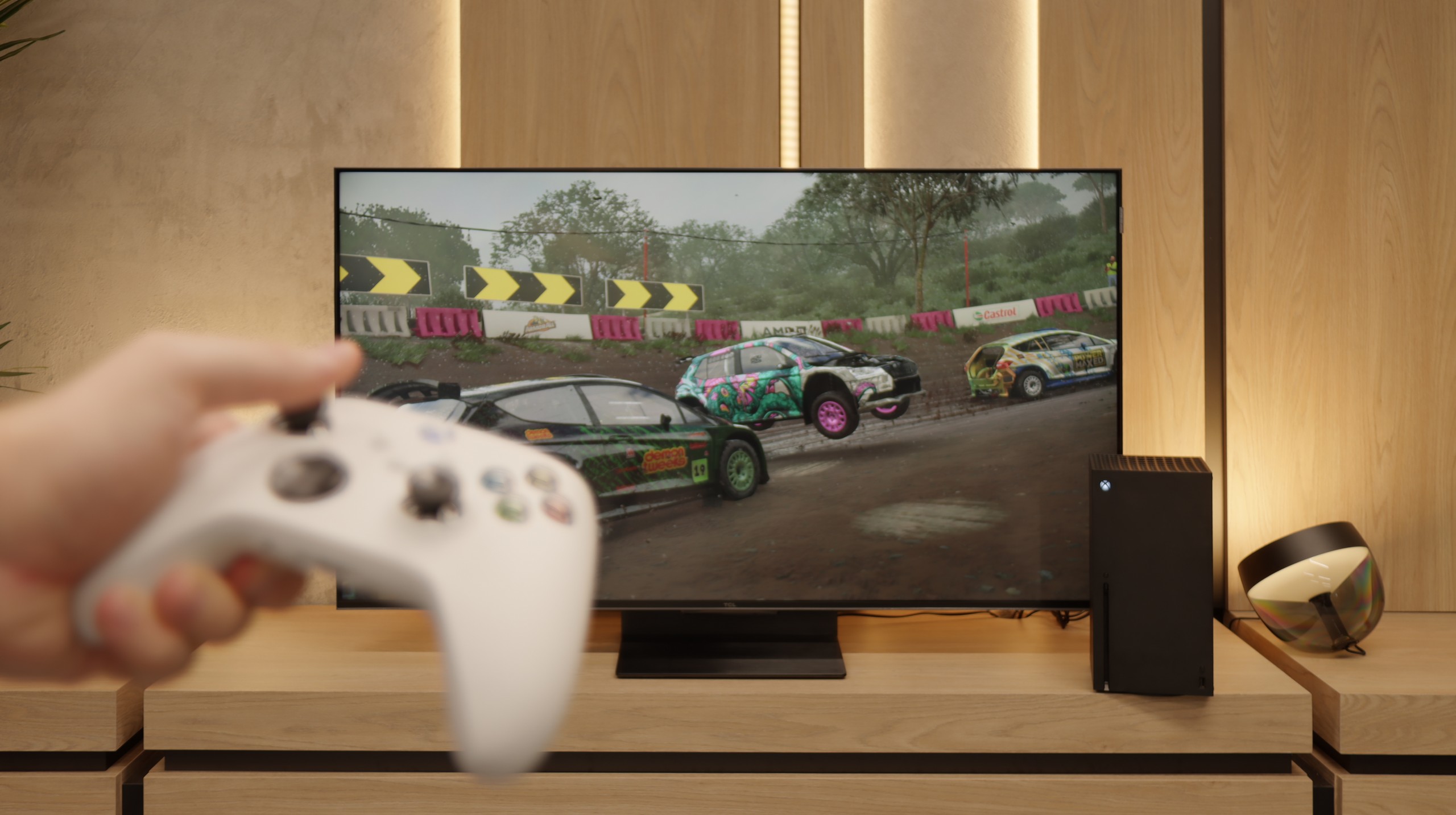
The Samsung DU7192 television is equipped only with HDMI 2.0 ports, which is not surprising given the price of the device and its consumer profile. Therefore, it’s also logical that we won’t achieve maximum quality on the latest generation consoles. Thus, it only has the most basic feature for gamers, which is ALLM. It's a pity that the manufacturer didn’t implement at least GameBar, as it is currently a standard, even in lower-end televisions, and could introduce significant conveniences regarding quick changes to settings.
The TCL C7K is a television that on paper appears to be the dream equipment for gamers – and most importantly, it holds up in practice too. To start with good news: there are two full-bandwidth HDMI 2.1 ports, so we can easily connect both a console and a computer, taking advantage of all their capabilities. The panel itself supports a refresh rate of 144 Hz, which gives a significant advantage in dynamic games. There is also a complete set of gaming features: VRR (variable refresh rate), ALLM (automatic low-latency mode), and support for Dolby Vision in games. There is also the HGiG mode, which allows for HDR effects consistent with the creators' intentions. GameBar, an information bar for gamers. It works quickly, looks clear (like a Nintendo console👌), and shows what matters most: the current frame rate, VRR status, and even HDR parameters.
Input lag
10/10
9.7/10
SDR
HDR
Dolby Vision
The results of input lag measurements in DU7192 are at a high level, regardless of the signal or resolution. All gamers will certainly appreciate the manufacturer's efforts, as a game running at 4K 60 Hz with HDR will have only 11 ms of delay, which is practically imperceptible even in online games.
When it comes to delays, the C7K gives no reason for complaints. In games at 120 Hz, input lag is around 10 ms, which means the television responds really quickly. And interestingly – even in Dolby Vision mode, the result is very similar, which is not always the standard. Good job, TCL. At 60 Hz, the lag does increase a bit, but that's completely normal and affects virtually every television with a refresh rate of 120Hz and above. The most important thing is that everything still runs smoothly and there’s no feeling that something is not responding to our actions.
Compatibility with PC
6/10
8.4/10

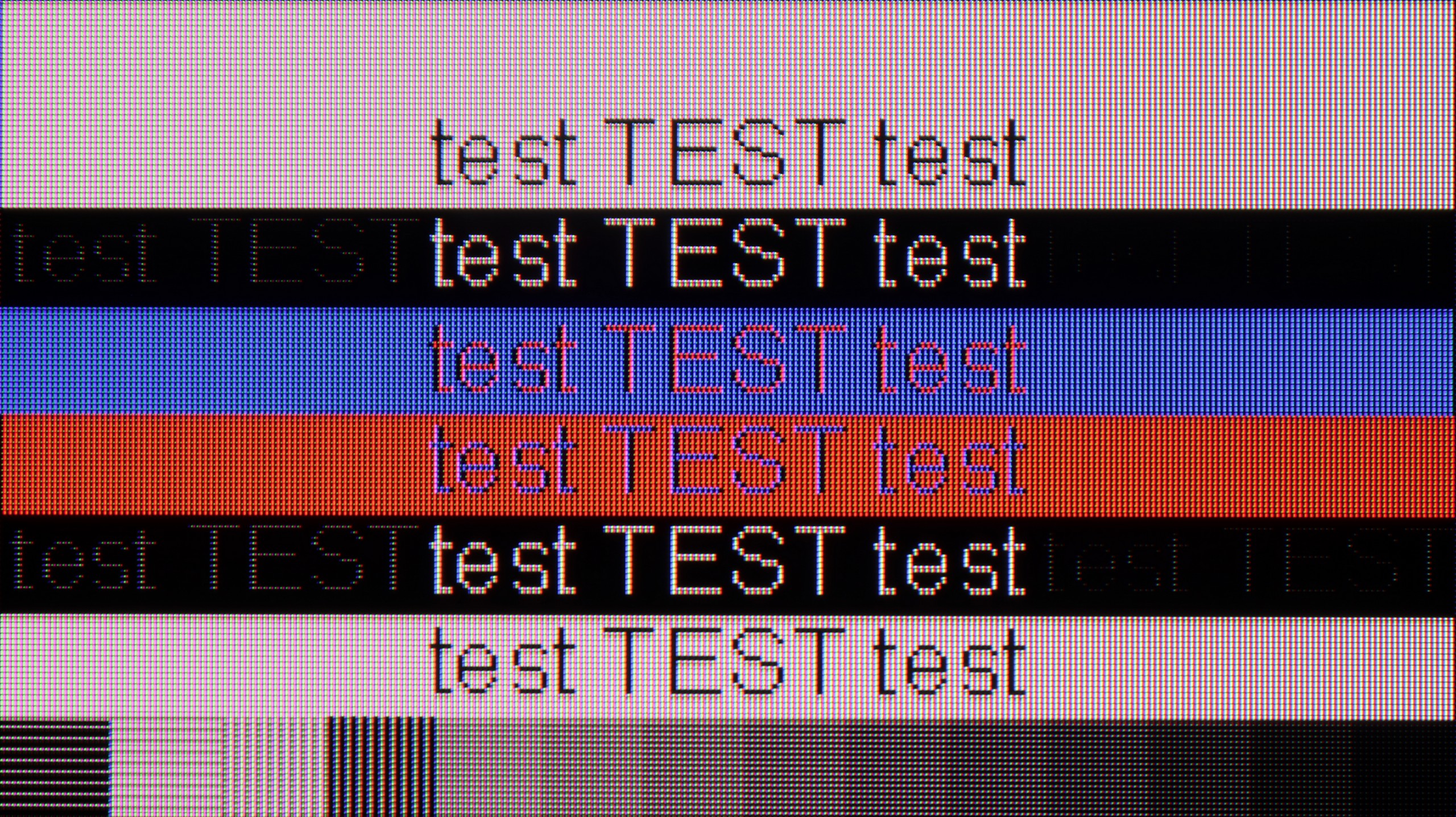
After connecting the television to the computer and wishing to use it as a monitor, we can expect a low input lag of 11 ms, which is practically imperceptible along the mouse-screen-eye line. Thanks to the proper implementation of chroma 4:4:4, the readability of fonts is at a high level, so one can confidently connect the DU7192 to the computer as a monitor and expect comfortable work with text. It is also worth mentioning that this good cooperation with the computer is also due to the IPS panel itself, which, due to its construction, allows for very sharp font retention. The subpixel arrangement is BGR, which does not negatively affect the use of the television as a monitor. However, since operating systems are not adapted to such a subpixel format, it may cause slightly less sharp outlines. This is, however, a practically negligible issue, and only a handful of people may notice it. When it comes to gaming, the lack of G-Sync and a frequency of 60 Hz are limitations that may disappoint gaming enthusiasts, especially those requiring quick reactions. For this reason, the television receives a lower rating in this category, although as a monitor for everyday work, it presents itself decently.
If we are going to connect the C7K to a computer – especially for gaming – there is definitely a lot to play for. We have 4K at 144 Hz, which already sounds great, but if we lower the resolution, the television can even display up to 280 Hz. In e-sports, where every fraction of a second counts, this really makes a difference. On top of that, there is support for G-Sync and FreeSync, so regardless of which graphics card we have – the image will be smooth, without any stuttering or tearing.
However, if we plan to place the C7K on a desk and use it like a monitor, it’s a bit less "rosy." Yes, it supports chroma 4:4:4, so fonts should be sharp, but with very dark letters, there is slight blurriness and dimming of the edges. This is not something that immediately stands out during gaming or watching, but when working with text – it can be distracting. In everyday use – it’s probably nothing to worry about, but if we plan to place a 50-inch screen a meter from our face, it’s worth keeping this in mind.
Viewing angles
6.8/10
3/10
IPS matrices, unlike VA panels, are known for having very good viewing angles. This is no different in the case of Samsung DU7192, as even with a slight shift off-axis, the colours maintain very good hue and saturation. However, it is worth noting the drop in contrast, which is typical for LCD matrices.
There are no surprises here – the C7K has classic viewing angles for a VA panel. That is: sitting directly in front – it’s excellent. The colours look good, the contrast is strong, everything is in place. But just shifting slightly to the side and it starts to get worse – the image loses saturation, blacks turn grey, and the overall impression diminishes a bit. So, if we plan to watch together with a few people or have a sofa that takes up half the living room – it’s worth seating everyone a bit more centrally. You can watch from the side, but don’t expect miracles – it’s simply a characteristic of VA panels.
TV efficiency during daytime
2.8/10
6.1/10

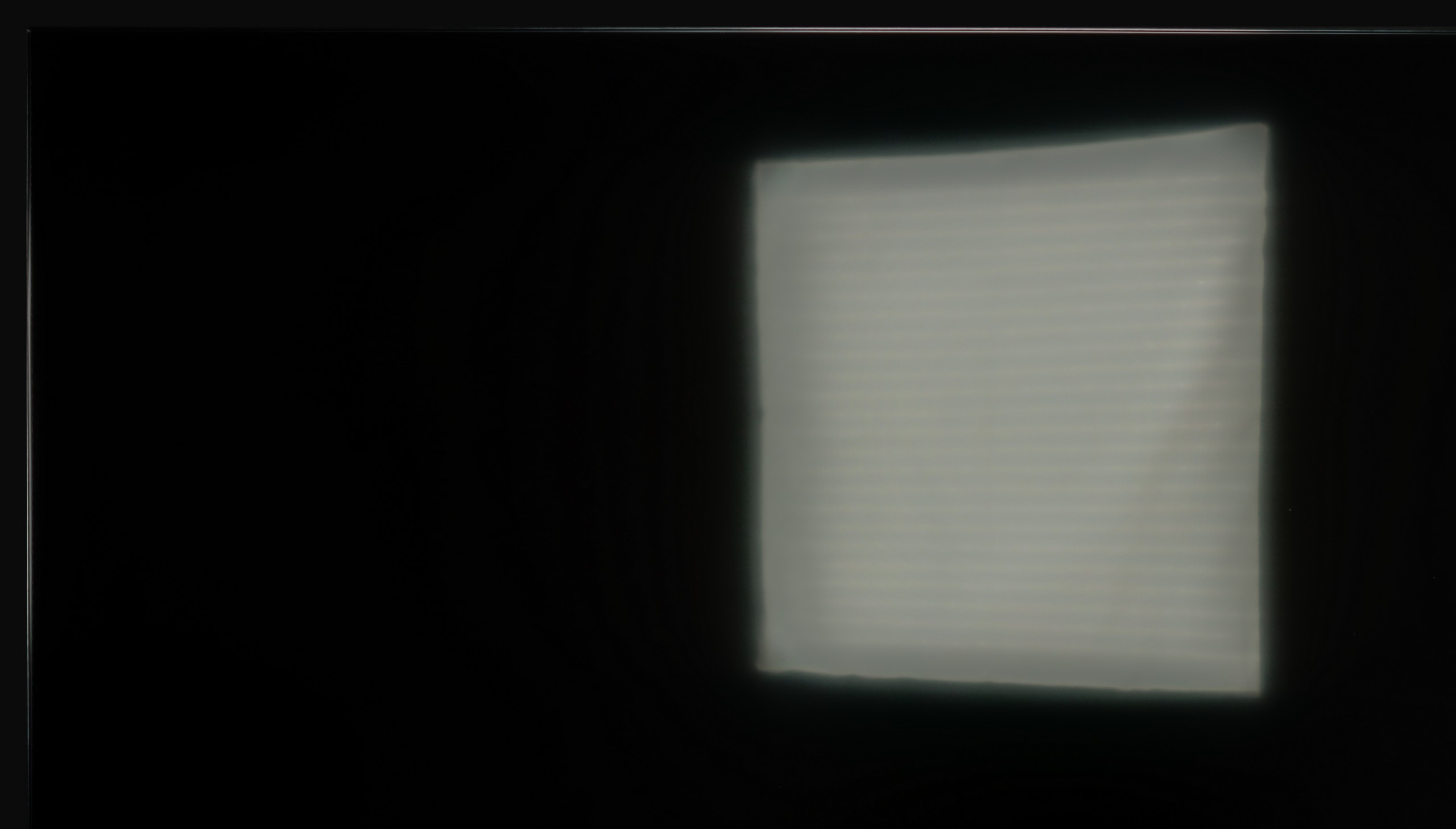


Matrix brightness
Average luminance SDR
TCL C7K / QM7K: 475 cd/m2
Samsung DU7192 (IPS): 227 cd/m2
The Samsung DU7192 panel has a satin finish; unfortunately, this did not help the tested television in suppressing reflections of light falling directly on the panel. The situation is not improved by the fact that the maximum brightness of the panel in SDR content is 227 nits. It can be said that the tested television is rather not suited for daytime use.
Fortunately, the TCL C7K performs quite well in bright rooms. The applied panel has a satin finish that effectively suppresses reflections, which means we don't have to worry about lamp or window reflections even on sunny days. Importantly, the colours maintain their intensity and do not wash out, as can happen with weaker matte panels. In terms of brightness, the average for content like YouTube or regular television is slightly below 500 nits. This is not a record-breaking result – for example, the MQLED85 (C765) performs better in this regard. However, for everyday viewing during the day, it should work without major issues, provided we do not plan to place it opposite a south-facing window without curtains.
Details about the matrix
Subpixel Structure:

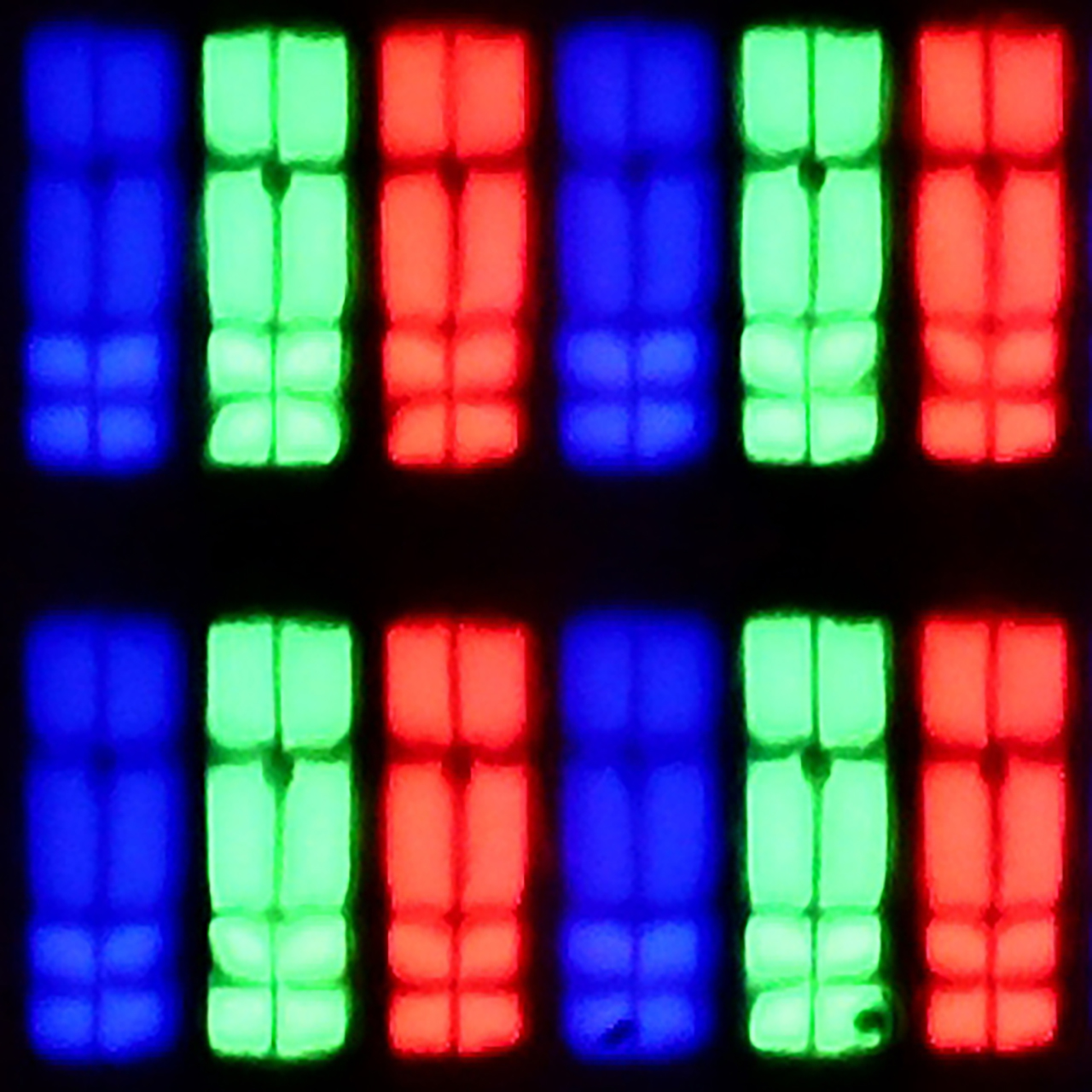
Panel uniformity and thermal imaging:

Samsung DU7192 (IPS)
TCL C7K / QM7K
TV features
5.5/10
7.3/10
- HDMI inputs3 x HDMI 2.0, 0 x HDMI 2.12 x HDMI 2.0, 2 x HDMI 2.1 48Gbps
- OutputseARC (HDMI), ARC (HDMI)Toslink (Optical audio), eARC (HDMI), ARC (HDMI)
- Network InterfacesWi-Fi 2.4GHz, Wi-Fi 5GHz, Ethernet (LAN) 100MbpsWi-Fi 2.4GHz, Wi-Fi 5GHz, Ethernet (LAN) 100Mbps
- TV receptionDVB-T, DVB-T2, DVB-S, DVB-S2, DVB-CDVB-T, DVB-T2, DVB-S, DVB-S2, DVB-C
Classic features:
- Recording to USB (terrestrial TV)
- Recording programming
- Picture in Picture (PiP)
- RF remote control (no need to aim at the screen)
- Backlit remote control
- Teletext
- Audio only mode
- Bluetooth headphones support
- Simultaneous Bluetooth headphones & TV audio
Smart features:
- AirPlay
- Screen mirroring (Windows Miracast)
- Voice search
- Voice search in native language
- Ability to connect a keyboard and mouse


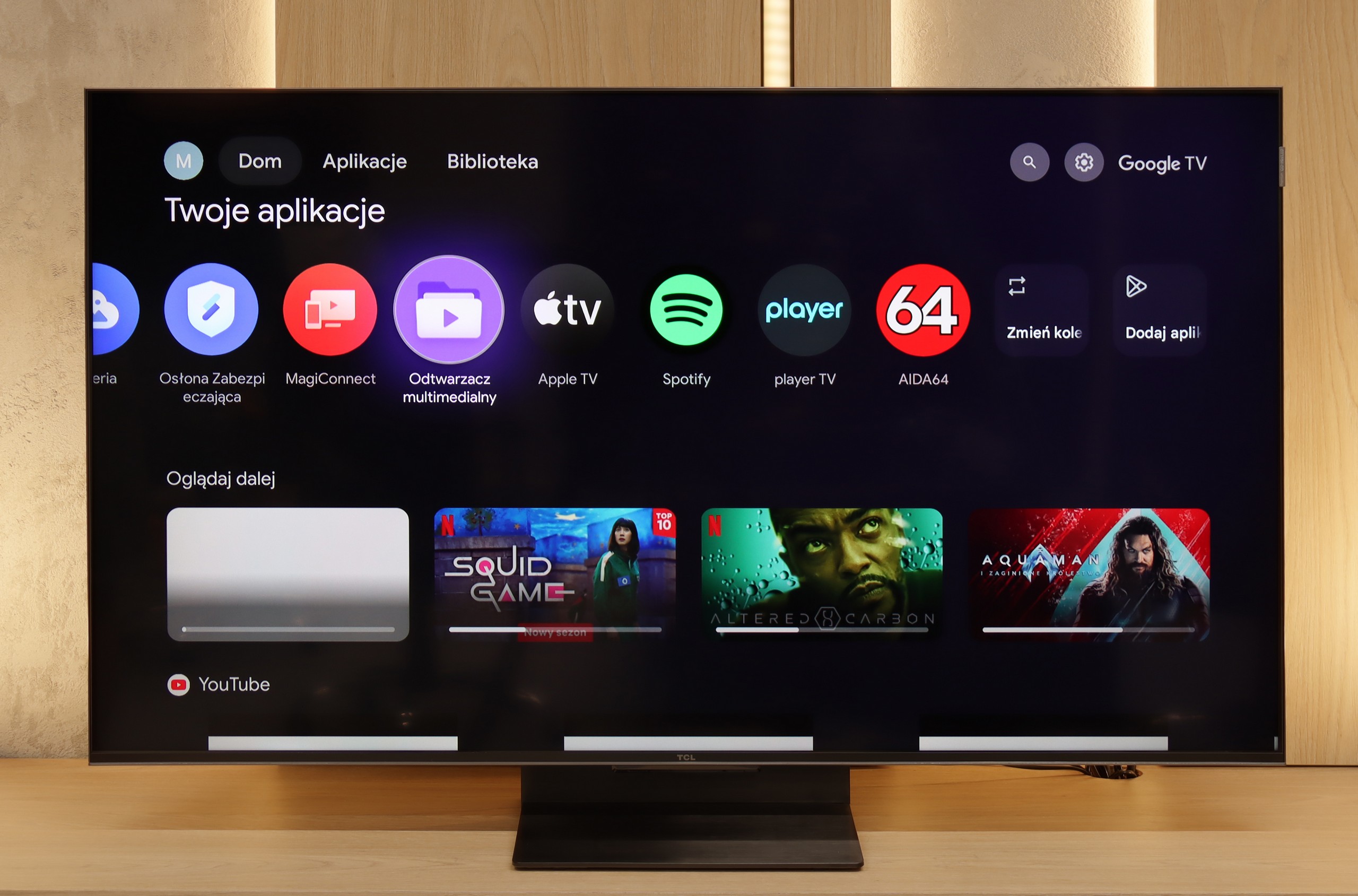
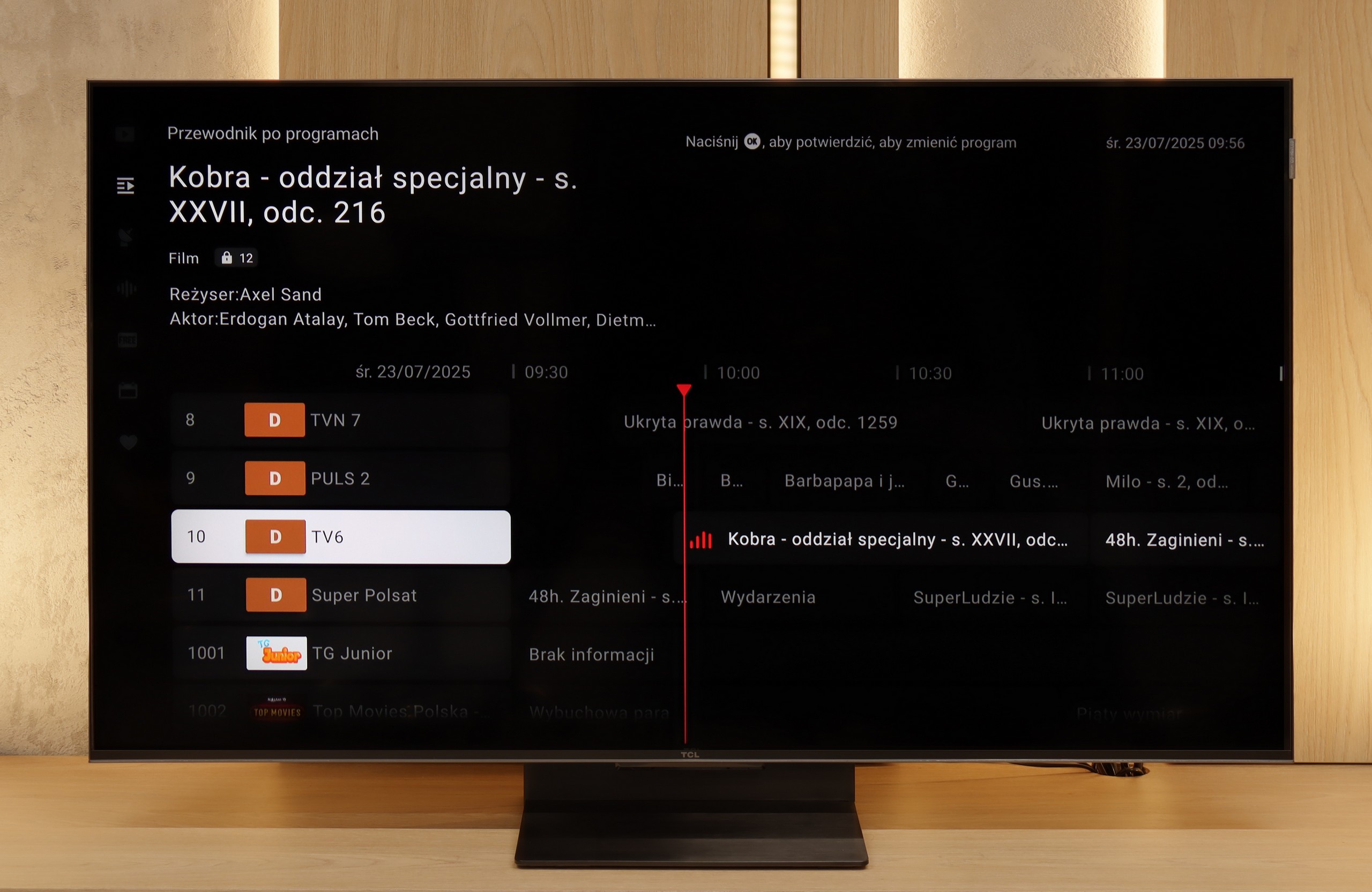
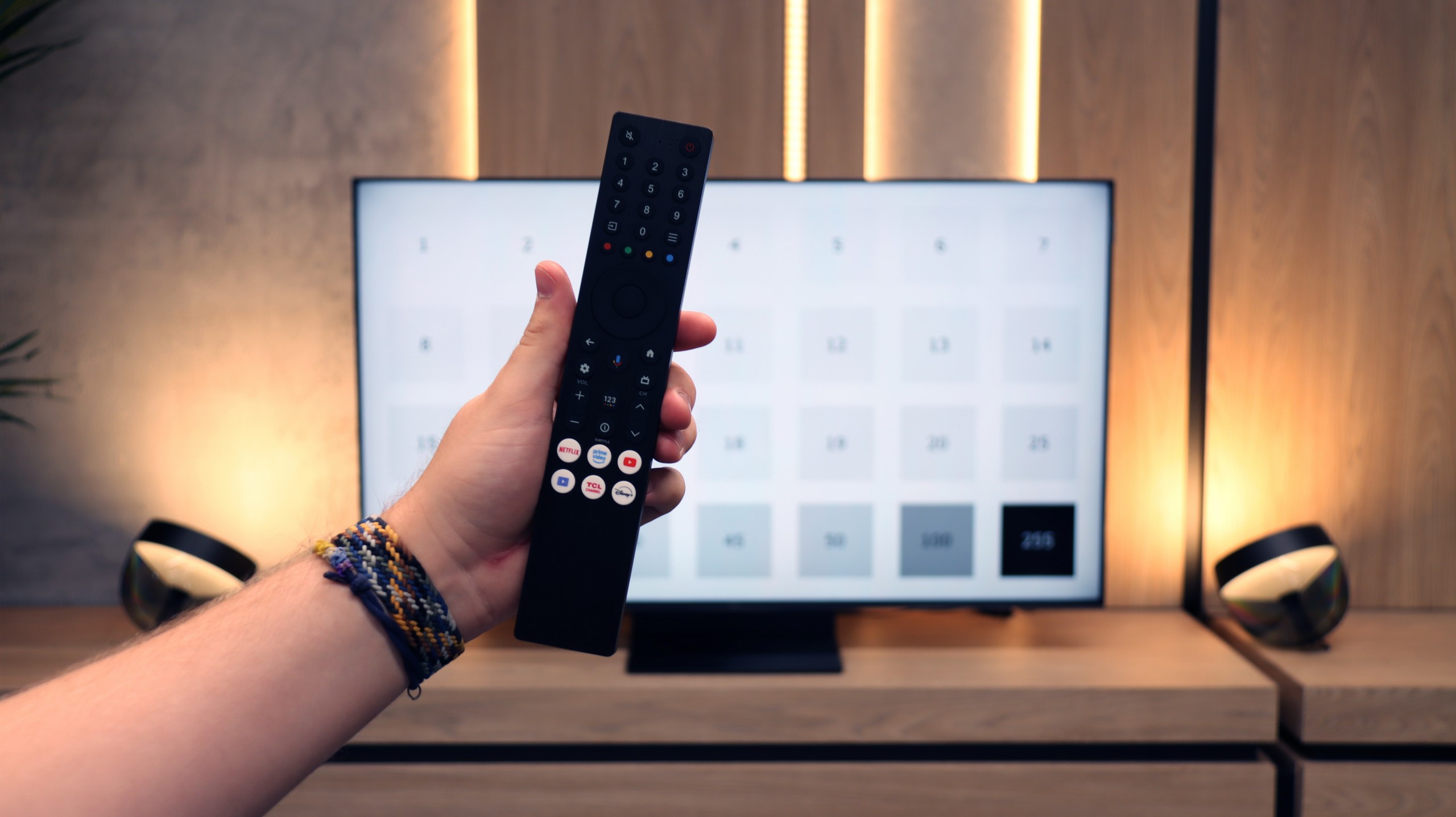
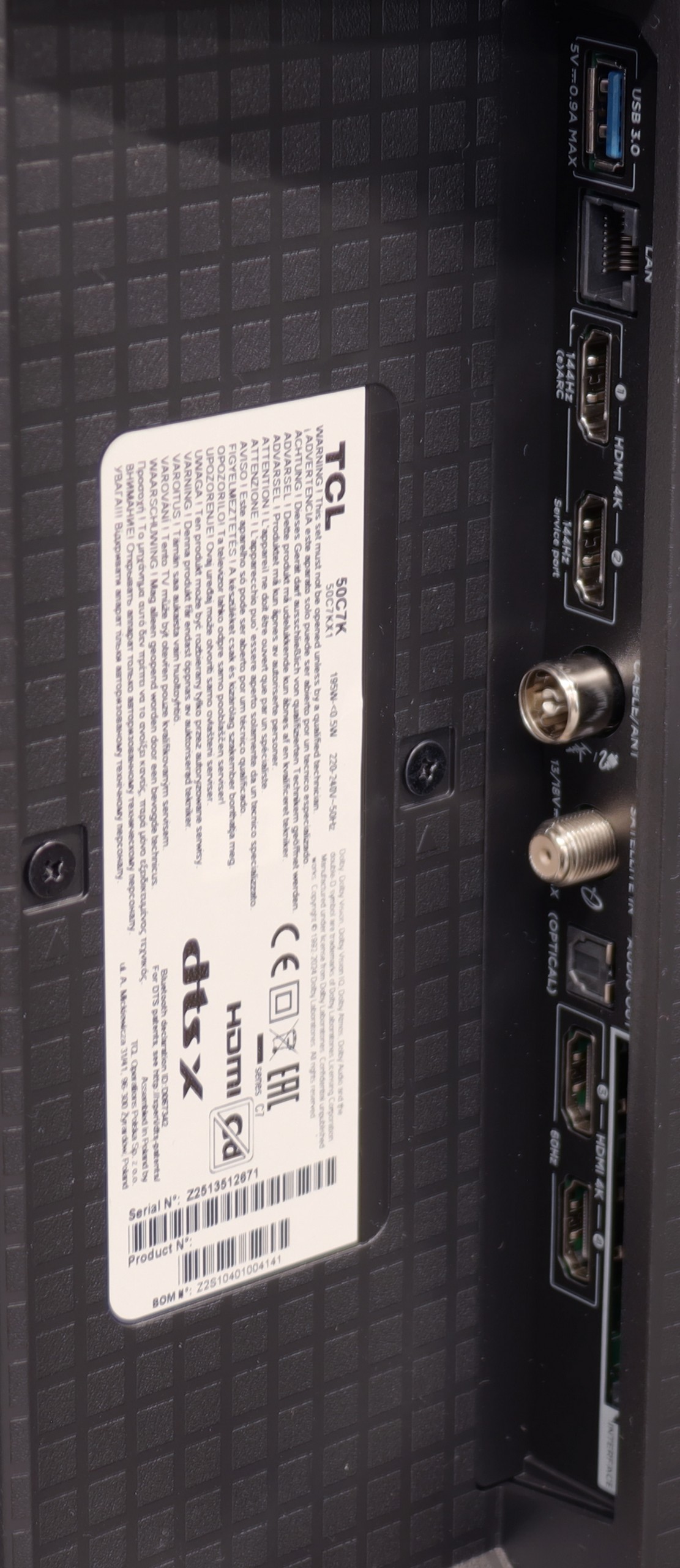
The operation of the Samsung DU7192 is powered by the proprietary Tizen system. This is quite well-known software, as the manufacturer has been developing it in its televisions for a really long time. Its main advantage is smooth performance and the absence of significant lags, which we can confirm through conducted tests. The biggest drawback, however, is its closed nature. Although the app store is quite extensive, we are still at the mercy of the manufacturer. Therefore, we will not be able to install any missing items, for example, from a USB drive. On the other hand, a benefit, especially for Apple device users, is the implementation of AirPlay, which allows easy mirroring of content from a device to the television. Fortunately, Samsung has also provided the option to connect a keyboard and mouse for much quicker navigation through the television menu. It is worth mentioning that the manufacturer has thankfully included a Bluetooth remote this year, which often wasn't the case in the past. The Tizen system has one more advantage. It integrates very well with external devices like the NC+ decoder or soundbars. The connection process is very quick and does not require special skills.
The Tizen system is very efficiently functioning software, which is certainly a strong advantage of the television. While more advanced users may complain about the lack of KODI, the rest will be satisfied.
SmartTV: GoogleTV
The greatest strength of the TCL C7K in everyday use is undoubtedly the Google TV system. Thanks to it, we have access to an almost endless library of applications, including some more niche ones that are often unavailable on other platforms. The built-in Google Assistant understands Polish, so we can easily ask what’s on TV, what the weather is like, and even issue a few voice commands to control the television. The presence of Chromecast and AirPlay, which work smoothly and make life easier, is also a plus.
User Functions
On the downside, the classic features are somewhat lacking. Of course, we have the basics – teletext, EPG, and the ability to connect headphones – but that’s about it. There is no USB recording feature or picture-in-picture (PiP) mode, which can still be found among competitors. It’s also worth remembering that Google TV in the TCL edition can sometimes have strangely translated parts of the menu or minor errors in the interface. These are not things that interfere with daily use, but those sensitive to details may notice them.
Playing files from USB
9.1/10
9.2/10
Supported photo formats:
Maximum photo resolution:

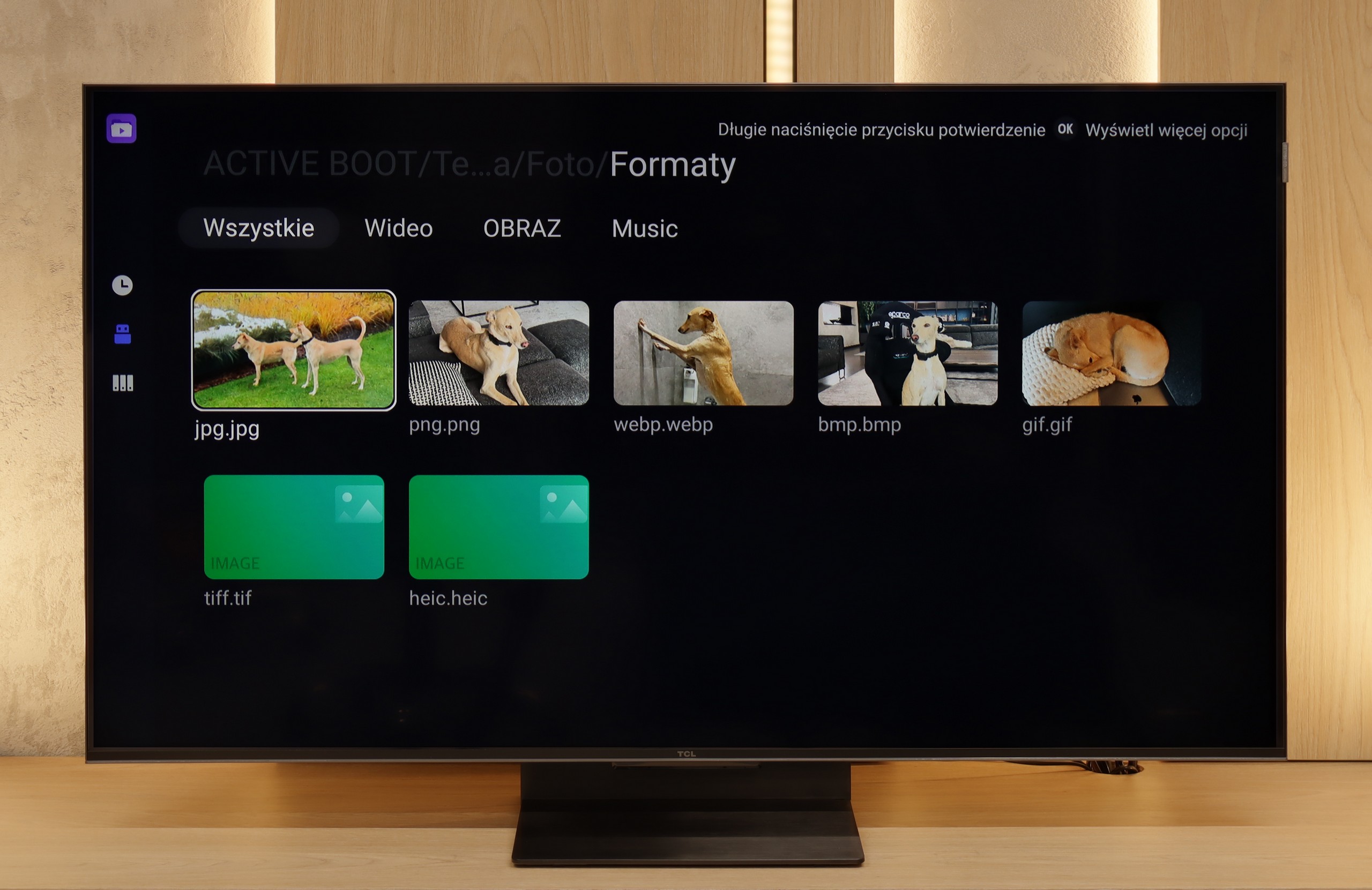
The built-in player Samsung DU7192 is a significant advantage. It handled almost all video and audio files prepared for the testing process excellently. The only exceptions in this regard are the Dolby Vision format (which is not surprising) and less popular codecs. Also worth noting is the support for Polish characters and the ability to change font colours. However, it performs worse with photo formats, as it only supports the popular JPEG. There is definitely a lack of formats such as PNG or Apple's HEIC.
The built-in file player in the TCL C7K performs really very well. It supports most of the most popular audio and video formats, so if we want to quickly plug something in from a USB drive and play it – there should be no problem. Of course, as is usually the case, we can find some minor shortcomings – not every exotic codec will work (Apple's HEIC), not all subtitles will be perfectly synchronised (txt.). However, the biggest advantage of this television comes to the rescue, namely Google TV. Thanks to access to the Google Play store, we can easily install an alternative player, e.g. VLC, and then no files will be a concern for us.
Apps
8.7/10
9.6/10














































Sound
5.4/10
7/10
- Maximum volume83dB76dB
- Dolby Digital Plus 7.1
- Dolby True HD 7.1
- Dolby Atmos in Dolby Digital Plus (JOC)
- Dolby Atmos in Dolby True HD
- DTS:X in DTS-HD MA
- DTS-HD Master Audio
When evaluating the sound from DU7192, it should be noted that its drivers are not the best. Unfortunately, this has consequences in the form of very poor sound quality. We recommend using half of the volume scale due to possible distortions. Fortunately, the television offers a wide range of audio codecs, including the two most important ones: DTS-HD Master Audio and Dolby Digital Plus, which allows for the transmission of surround sound to an external device. This ensures high sound quality that will satisfy users demanding better audio experiences.
To be honest, we didn’t expect much from the sound of the 50-inch version of the C7K model. Typically, in such sizes, it’s hard to get anything more than thin, flat sound. But here – a pleasant surprise. The audio proved to be really enjoyable, with good clarity and even a slightly discernible bass. This is probably related to TCL's new collaboration with the Bang & Olufsen brand, which is a novelty for 2025. Whether the C7K actually uses the original transducers from the Danish premium brand – we cannot confirm. But the end result still deserves a thumbs up. For a television without a soundbar – it sounds quite pleasant.
Acoustic Measurements
No acoustic data
76dBC (Max)
75dBC


